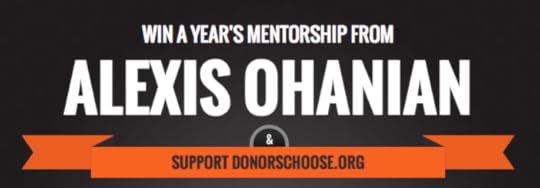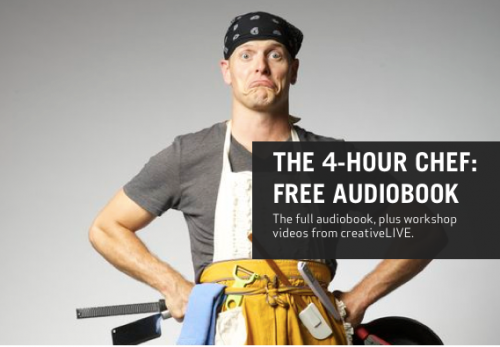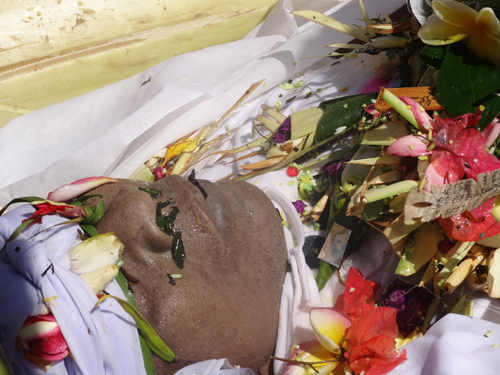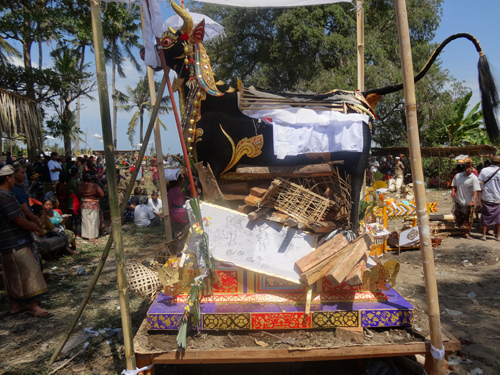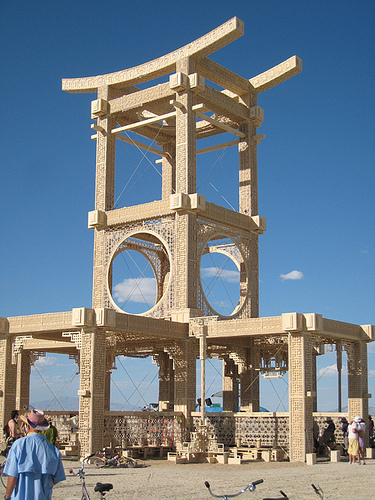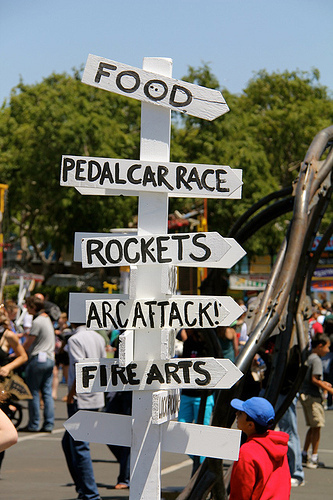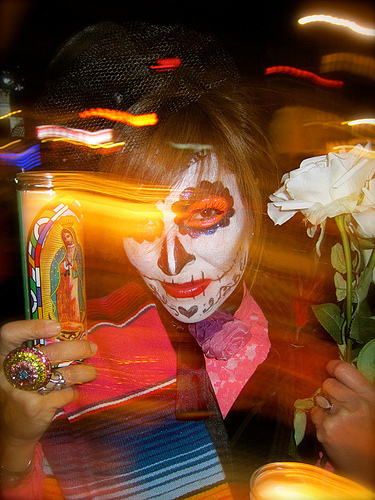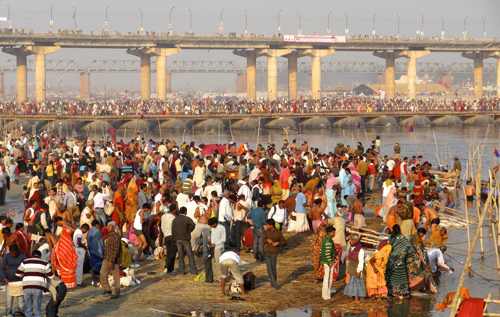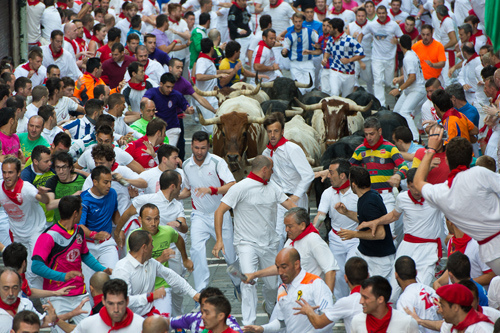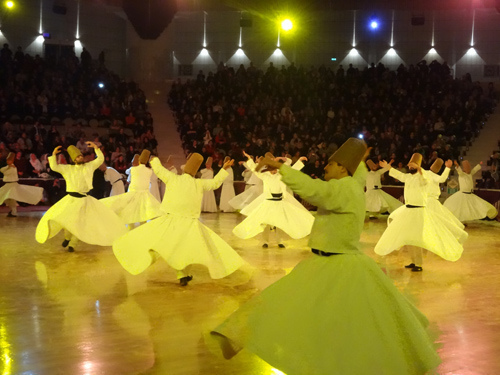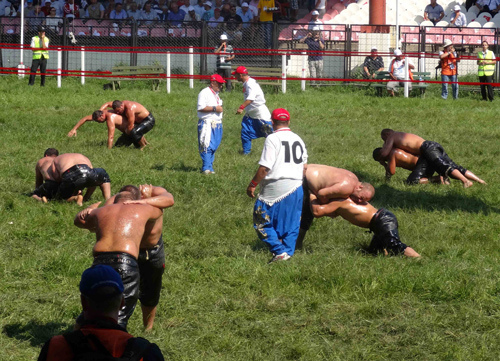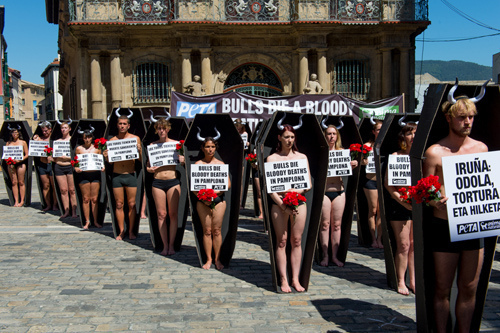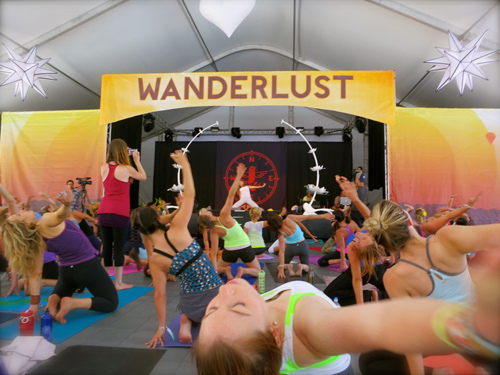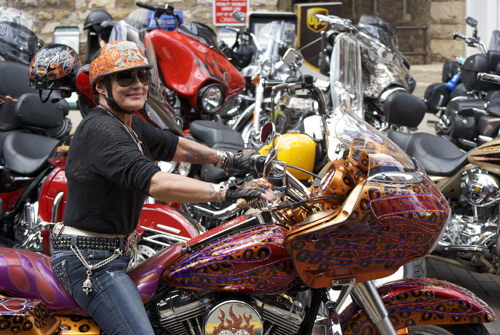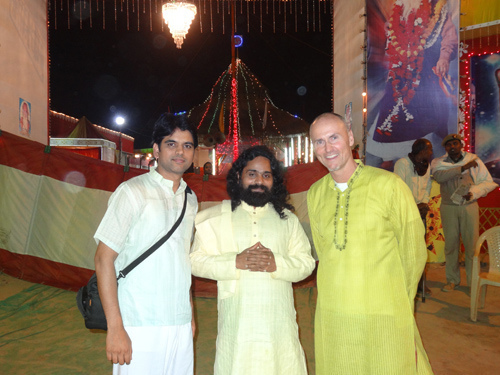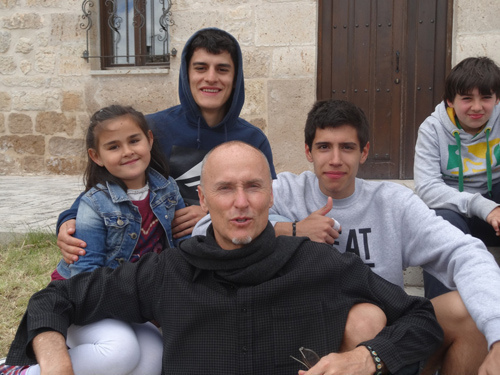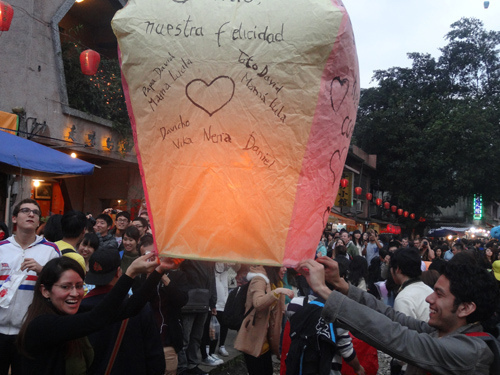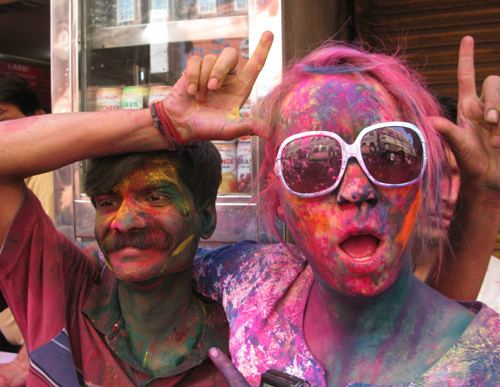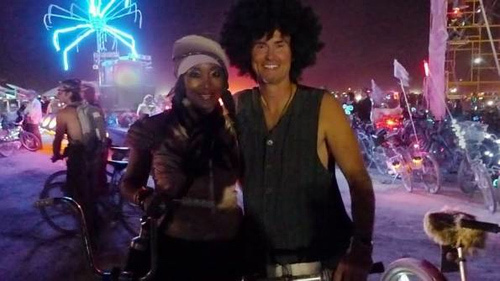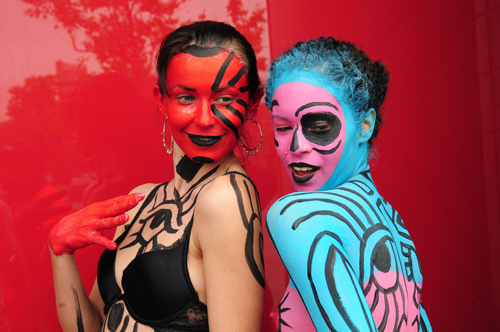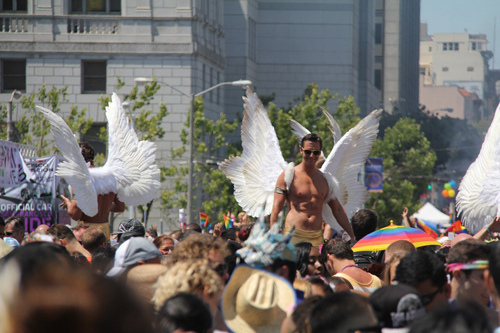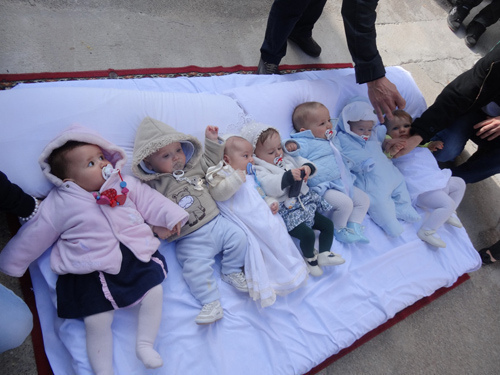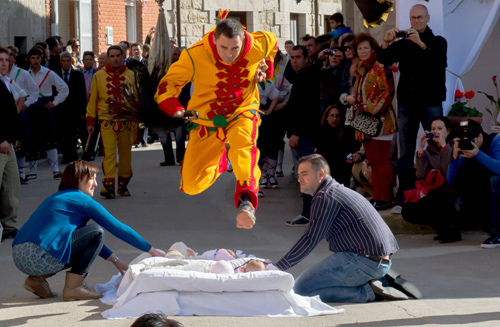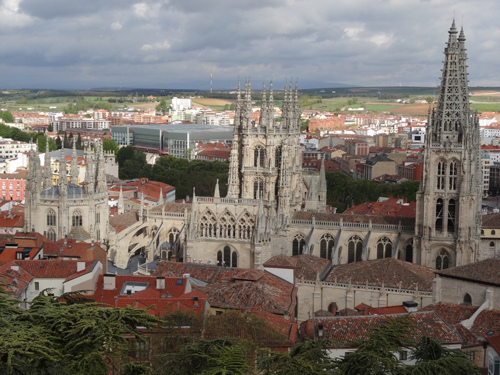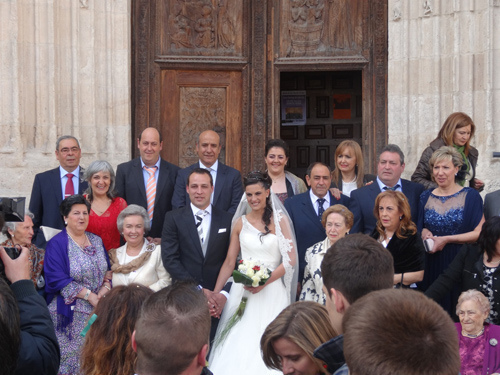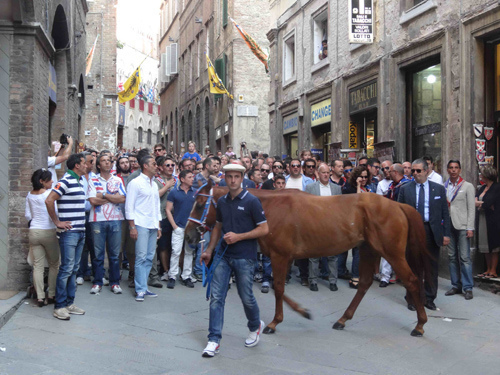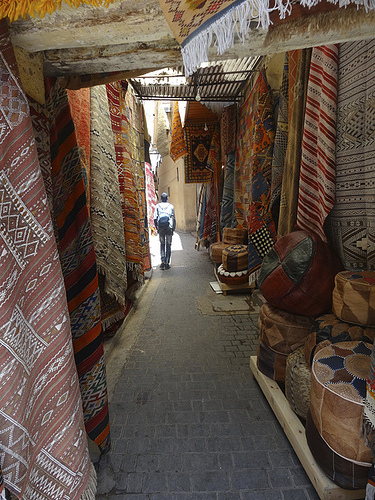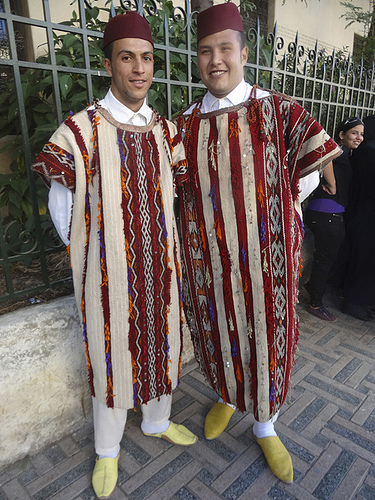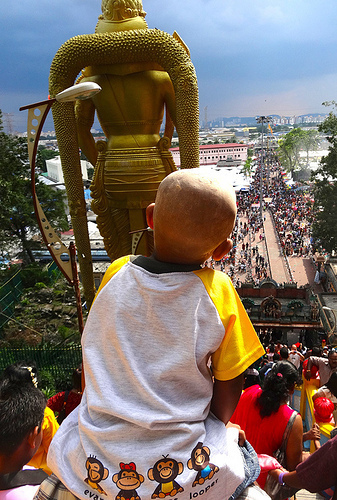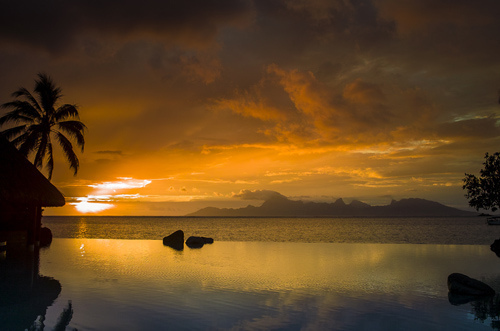Timothy Ferriss's Blog, page 108
September 17, 2013
How to Get National Press With No Budget (Plus: One Year of Mentorship from Alexis Ohanian)
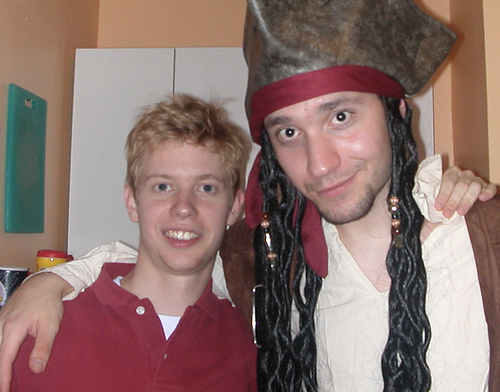
Preface from Tim
This is the second post by Alexis Ohanian for Entrepreneurship Week on this blog. Here is the first post, which covers his founding of reddit, which he later sold for millions of dollars.
This post covers a critical topic: how to get massive attention for your company from national media. How do you pitch press? Develop relationships with influential journalists? The real answers might surprise you.
Most books and articles on this subject are pure BS. Speaking as someone who’s been on magazine covers (Outside, Inc. Magazine) and section covers (NYT Style Section, Travel Section), I can tell you: there is a science to this.
Alexis is a master. Enjoy.
Enter Alexis
I’m back!
Tim very kindly invited me back to give you another excerpt from my book that draws from all my experience over six years as a Y Combinator advisor and startup investor (70+ companies).
I want to help you do what Steve and I did (not in costume) to grow reddit into the top-50 website it is today… with a total advertising budget of a few hundred dollars. I spent that all on stickers…
Sidenote: The first one of you who tweets at me (@alexisohanian) with the correct answer for Steve’s Halloween costume in the above photo will get a signed copy of Without Their Permission, plus some fun extras.
Traction: Everyone wants it, here’s how I think about generating “buzz”
I’m not a businessman, I’m a business, man.
—Jay-Z, “Diamonds From Sierra Leone”
I believe in startup karma.
Being the kind of person who’s always asking for favors and hustling others is a reputation that not only gets around, it sticks. It’ll work in the short term, and perhaps there are some exceptions to the rule who have made it work in the long term, but being someone who’s always asking for favors makes the already difficult job of starting something new immeasurably harder.
Instead, look at every meeting as a chance to do someone a solid. This especially matters when dealing with representatives of the media, because just buying them a coffee doesn’t mean you’re getting a front-page story. Look at every meeting as a long-term investment. She’s not writing about your startup? That’s okay!
Be helpful. What’s she thinking about right now? Some kind of trend is going on in X that’s not been covered yet, and she’s looking for a founder doing Y. If you can connect the dots, make the introduction for her. You’ve just helped two people with one e-mail. Cha-ching. More good karma.
Over the years, you can build a reputation as a connector in your field. Connectors are a journalist’s trump card when they need to get a lead on an unreported idea, or when they need an introduction in order to land a useful interview. This is a valuable position for you to be in, because it means you’re going to stay at the tops of their minds. When your journalist friends are writing about something in your field, whom do you think they’re going to reach out to first?
Never Turn Down Cannoli
In between bites of cannolo (yep, that’s the singular form of cannoli), I was explaining to Rachel Metz, freelance reporter for Wired, why reddit.com was going to become the front page of the Internet. She seemed interested, but she could’ve just been enjoying her cannolo.
I’d taken the Fung Wah bus down from Boston to meet with her in downtown Manhattan because a few weeks earlier, I’d met a friend of hers named Jennifer 8. Lee. Jenny had attended a Halloween party that Steve and I had thrown at our Somerville home and office—which should explain the above photo—and we hit it off. We discussed the subject of her book proposal, which happened to be, of all things, Chinese food. I managed to impress Jenny with my knowledge of Chinese cuisine, so we got to talking that night and that led to her introduction to Rachel.
A few days later, Rachel would confess to me that while she initially wanted to write a story about reddit, she felt we’d become friends and that it wouldn’t be professional for her to pursue the story. That was fine by me. No Wired story came from that, but I got a new friend in Rachel, one who happened to mention reddit to her editor at Wired, Kristen Philipkoski. Kristen, the wife of Kourosh Karimkhany, was doing business development for Conde Nast and heard from Rachel about a pair of plucky founders in Boston working on something interesting called reddit.
And then one day (February 22, 2006, to be precise) this e-mail popped up in my inbox:
I’m a friend of Rachel Metz. I’m also the director of biz dev for CondéNet, the internet arm of Condé Nast, which, as I’m sure you know, publishes magazines like Wired, GQ, Vogue, New Yorker, Vanity Fair, etc. I’m intrigued with your technology and was hoping to set up a time to talk about possibly working together. I’m open the rest of the day today and Thursday, but will be traveling for a week starting Friday. Do you have time for a phone call? Also, are you based in Boston?
Little did we know that exactly one year after that fateful party on Halloween, Steve and I would be celebrating the acquisition of our company. As if you needed more reasons to throw a Halloween party. Or eat cannoli.
Everyone Is the Media
The traditional public-relations industry model is broken. Good riddance.
The only time I ever wrote a press release was when Condé Nast made me do it for the announcement of our acquisition, and I wasn’t about to argue with the company that had just bought my company. Full-disclosure: Since writing this book, I’ve had to edit a press release the PR firm hired by my publisher wrote on my behalf. But the truth is, I’m not certain that press releases are as relevant as they were in the twentieth century.
These days, everyone you meet is part of the media. Every relationship you enter into, whether it’s with a customer or a writer at The Wall Street Journal, is a long-term investment. No self-respecting journalist wants to feel like all she does is publish press releases as “news,” although some do. The idea that a press release is magically going to compel someone to talk about what you’re working on is absurd. At a time when none of us have enough time to pay attention to all the content the Internet produces, you can be sure the professionals who are pitched every minute of the day certainly don’t have the spare cycles. This means you’re going to have to make yourself known. Here are some things to keep in mind as you do that.
Be Helpful
If you’ve been doing your job as a founder, by now you should be an expert in your industry (and maybe even in a few others as well). Use that to your advantage when talking to the media. It gives you insights on bigger trends that are valuable to journalists, so be helpful—even if it’s not directly helping you or your company, it is actually still helping you and your company. Anything you can do to help someone else do his or her job better is going to win you that valuable startup karma. Noticing a trend in X meets Y, offer an introduction to some other experts in X meets Y. Be helpful!
Remember the RentHop team from chapter 4?1 While Lee Lin was getting his broker’s license, he found himself noticing trends. He validated that hunch when he and his co-founder, Lawrence Zhou, started mining mountains of New York rental-price data that revealed everything from how much more people are willing to pay for a doorman to how much less an apartment is worth for every block it sits away from a subway stop. At first, they had no plans to publish any of what they’d learned. Once Lee started promoting RentHop, however, he realized that these data were a tremendous resource. Whether it was a blog post he wrote charting the optimal time of day to search for rentals in New York (spoiler: between 9:00 a.m. and 10:00 a.m.) or a statistic a journalist could cite for an article, it was a piece of added value that bolstered his company’s reputation as experts in apartment rentals.
Every time Tim does a great job breaking down exactly how he does everything he does, it’s being helpful. Over time, he becomes known as the guy for getting things done (not always in 4-hours, mind you) then turns around and does solids for people like me. Building for the long-term.
Speaking of which, I’ve got an entire class on online brand building (lessons from reddit, breadpig, and hipmunk) with specific examples of everything from low-cost social media campaigns I used to make people love our hipmunk chipmunk to the sticker strategy that spread reddit aliens all over the world. Grab some popcorn, it’s long.
Pitch the Right Journalists the Right Way (by Not Pitching)
Okay, you’ve found them. Warm introductions to mutual acquaintances from people who know you both well always help, but there’s nothing wrong with a cold pitch. Just be concise. I try to write e-mails in fewer than five sentences. Precision with impact is one of the most effective writing skills one can have. The best way to get coverage is to not pitch your product. Journalists are human beings. Whether they write for [insert your favorite, most venerable news organization here] or they just launched their first blog yesterday, they do not exist just to write about you or your big idea. Sorry, but it’s better you hear it from me now. In order to earn their attention (and their goodwill), you’re going to have to give them something. Pitch by not pitching—be helpful. You know what they’re into, so send them a link to a breaking yet underreported story you think they’d appreciate. If you can introduce them to a fellow founder who’s working in a sector they’re covering, offer it to them. Know they love futuristic watches? Let them know when NOOKA is having a sale. When and if the time comes to make a pitch (you’ll know it when it happens), then do it well.
Tell Stories Around a “Peg”
Pardon the jargon, but it’s helpful to know how journalists think. Big trends, things that people are talking about, are “pegs” that you ideally want to anchor to your pitch. It could be as blatant and timely as the Olympics, or it could be more subtle. During the famed billion-dollar acquisition of Instagram by Facebook, Michael Seibel, CEO of SocialCam, a mobile video-sharing app and portfolio company, rode the wave of media attention surrounding the acquisition. It was no surprise that over the next few days, articles buzzed about who would be “Instagram for video.” It didn’t surprise me one bit when SocialCam was there in every discussion.
Over time you’ll develop an eye for it. If you’re reading about a particular idea that’s got everyone’s attention, find a way to connect your own story to it. If you don’t get written up, or quoted, or appear to have gotten anything in return for your time, don’t fret (and remember what I said about these people not existing to do you a favor). There’s always value in taking the time to meet someone. You shouldn’t always be pitching, anyway. Build long-term relationships and they’ll pay long-term dividends.
Don’t Forget to Document Your Startup
Take photos around the office, screenshots of early builds, et cetera. No matter how things turn out, you’ll appreciate having these memories later. In the meantime, it’ll be useful in a blog post or tweet. And if things turn out really well, people will come to really value those behind-the-scenes photos or embarrassing early builds.
For instance, here’s a photo of Steve and me from just days after we’d launched reddit.
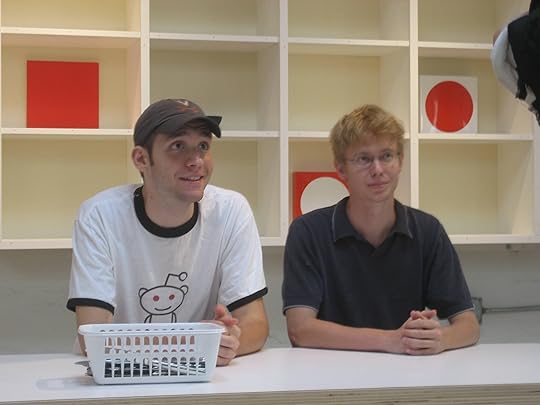
The first photo taken of Steve + me as “reddit founders” – photo courtesy of Trevor Blackwell
Please, please have a decent high-resolution photo of your founders readily available. I’ve had to arrange last-minute photo shoots for founders who were about to land some great press but didn’t have a single decent photo to send. Your smartphone won’t cut it. Borrow the nicest digital camera you can find from your nicest friend and take some photos. If nothing else, you can send them to your mom.
For good measure, record the stages of your product, too, even if it’s only so you can look back on them with a hearty laugh. No matter how your company turns out, you’ll appreciate having a record of its evolution. I use this first version of reddit as an example of just how embarrassed you should be by your first version.
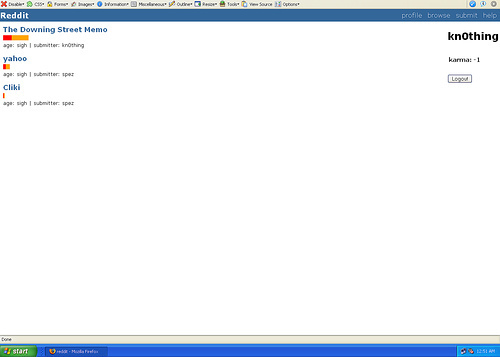
Attentive readers will notice I managed to get –1 karma, because Steve is a jerk.
Once You Get Press, Make a Note of It, Then Get Rid of It
This has been my policy since the day we finally got a taste of attention from the mainstream media. It was a different Internet back then, and it took me months of hustling to finally get someone to write about us. Oddly enough, it was a British newspaper, The Guardian, that wrote the first story—six months after we’d launched. It was great to see the increase in our traffic when a digital publication would write about us, but there’s something to be said for that palpable version of the news. The Guardian kindly sent us a few print copies. I reread the article, imagining better quotes I could’ve used, and brought it with me on my next trip back home. My parents had hoarded just about everything I did since I was a little kid (only child, remember), and my mom was thrilled to see her son’s name in print (I couldn’t tell her that it was less exciting than digital, which would have enabled us to actually get click-throughs to our site).
This started a tradition I continue to this day. Even though Mom is gone, I personally send my dad all the press I ever get, because I don’t want to see it. I don’t want to think about it for more than a day. It’s a twenty-four-hour rule. I think I heard a football coach talk about this once in an interview. Feel good about the win for twenty-four hours, and then get your mind off it and think about next week. Same goes for losses, too. But I especially don’t want to dwell on past accomplishments, and I recommend the same for my portfolio companies.
Complacency, especially in this industry, is toxic. Remember what I said about your milk shake—forget that kindergarten advice and don’t share it.
Spreadsheets Are Your Friends
As a startup founder, you’re a cheerleader. You should always have a recent e-mail, or tweet, or quote from one of your users who love you readily at hand. Go a step further and keep a mailing list of those superfans who love you so much they’ve said they’d be willing to be interviewed about your business. List those people on a spreadsheet that you share among your team, and when you encounter a superfan, ask her if she’d be willing to be contacted by the press at some point and have a testimonial on record.
Each superfan should have his or her own row on your spreadsheet. Establish columns for a favorable quote, home address, occupation, and e-mail address. Always respect a person’s privacy and explain why these tidbits are so helpful; years later, when this list gets long and you’re trying to help a journalist who’s writing about graduate students in the Bronx using [insert your type of product or service here], you can get him connected to the perfect person.
Keep another spreadsheet for press hits, designating columns for important sort criteria like name, e-mail, publication, a pull quote from the piece, and the URL. This becomes your press contacts list. PR people will brag about the size of these as though they were in a locker room, but, as always, it’s not about size—it’s about how you use it. You’re building relationships. It does not matter how many people you have on this list if none of them give a damn about what you have to say.
Start small. As I said earlier, it took six months before any mainstream media wrote an article about us, and until then I was reaching out to anyone who had a blog in tech or media. As you grow beyond your niche, you’re going to be forced to connect your idea to bigger trends and find ways to humanize it with real people telling real stories.
Traction starts with a product people want; as word spreads, you’ll start seeing the week-over-week and month-over-month growth that gets investors pulling out their checkbooks and briefcases full of money.
Actually, most investments are done via duffel bags full of cash—or via wire transfer.
Get started being awesome. None of us know what we’re doing, but trying is how we learn.
[Excerpted from Without Their Permission: How the 21st Century Will Be Made, Not Managed, by Alexis Ohanian.]
Get a Year of Mentorship
Yep, Tim inspired me with his DonorsChoose.org fundraiser, for which I had the pleasure of being a bonus-prize, and as we’re both advisory board members to this awesome non-profit, I figured this was the perfect place to launch it.
This means a lot to me, not just because it’s my home, but because of how much I believe in the internet to change the world for good. Yet this will only happen if we get all of us connected and armed with the skills to make the most out of this tremendous resource. This is one small step forward.
Anyone who clicks through this link to enter the campaign in the next 24 hours (ending 9am PT on 9/19/13) will get twice the chance of winning the grand prize — a year’s mentorship from me that also includes dinner with Tim Ferriss. I get emails every day from people asking about everything from choosing college majors (*cough* computer science *cough*) to advice on raising venture funding. I will be a text message away, like a firefighter-yoda (though much less heroic), to help with in-the-weeds strategy or just a motivational pick-me-up at a moment’s notice for an entire year of our lives.
It’s the sort of thing I’m already doing for my portfolio founders and I’ll gladly take on another if it means helping this many of Brooklyn’s kids.
###
About the author: Alexis Ohanian is the author of Without Their Permission.
Ohanian is a startup guy making the world suck less: reddit, breadpig, hipmunk, Y Combinator. Investor, speaker, host of Small Empires, and loves his cat Karma.
Afterword by Tim
Several commenters have asked, “How do I get to know journalists or bloggers in the first place?” Besides volunteering to work for free at events where they congregate (e.g. SXSW, GigaOm/PaidContent, etc.), here in an article that explain how to do it remotely:
From First TV to Dr. Oz – How to Get Local Media…Then National Media (Includes actual pitches, e-mails, etc.)
Of course you don’t. But if you read the book, you’ll know even more about what RentHop did to get traction






From Dot-Com Zero to Hero: One Man’s Story

“Yes, I’d like to upgrade my dad’s season tickets. Oh, front row, fifty-yard line, please–the best you have.”
—Alexis Ohanian, approximately three minutes after he sold reddit
Preface by Tim
I first met Alexis Ohanian through education non-profit Donorschoose.org, as we both sit on their advisory board.
Years later, he still impresses the hell out of me.
Alexis is the sharp and affable co-founder of Reddit (stylized as “reddit”, which is how it’ll appear in this post henceforth). He has made millions of dollars, fought Washington and won, created the largest Secret Santa program in the world (92 countries, almost 20,000 participants), and been on The Colbert Report for massive fundraising through reddit.
He’s kicked a lot of ass.
That said, few people know the backstory. His journey has involved failure, pain, self-doubt, and much more. In other words, he battles the same challenges that you do. He has learned to be an entrepreneur, just as you can.
The following guest post from Alexis is an exclusive peek behind the curtain. His new book, Without Their Permission, inspired me to ask him to spill the beans. He generously obliged.
ALSO: From 9am-1pm PST (12pm-4pm EST) today, Tues., Alexis will answer any questions you pose in the comments! Just wait for things to start and ask away.
Enjoy the lessons, and gird your loins (and emotions) for the ride. Business and life are full-contact sports…
Enter Alexis
Halloween has always been one of my favorite holidays, but on October 31, 2006, all the hard work Steve Huffman and I had put into starting reddit (with lots of help from our first hire and good friend, Dr. Christopher Slowe) had quite literally paid off.
The first thing I did after the money showed up in my checking account was to call the Washington Redskins ticket office and upgrade my dad’s tickets to something a bit better than the nosebleed seats we had. I then made a sizable donation to my mom’s favorite charity and got back to handling all the inbound press. It was a blur of a day, but once it ended, I was able to take stock of just how far we’d come in only sixteen months.
When Steve and I looked at each other, there were no cheers of joy, just a shared sigh of relief. We’d pulled off something statistically improbable—just barely—and we knew it. And after everything we’d been through…wow. Grateful, we went and shared a pizza at Mike’s, the same place where we’d been ordering pies since we moved to Somerville, Massachusetts. There, we caught our breath after an entire day of interviews.
For my parents, it was a day when their only child had become a millionaire before he was twenty-four. But they always just wanted me to be happy. Neither one of them really understood the PC they brought into the house not long after my tenth birthday, but they let me do whatever I wanted to it as long as I didn’t break it.
Actually, I almost did break it on several occasions, but then I wound up putting it back together. That computer was my gateway to another world once we got a dial-up Internet connection. I campaigned hard for that 33.6Kbps connection, and when I finally got to hear those now-antiquated sounds of the modem, it seemed like magic to my adolescent brain.
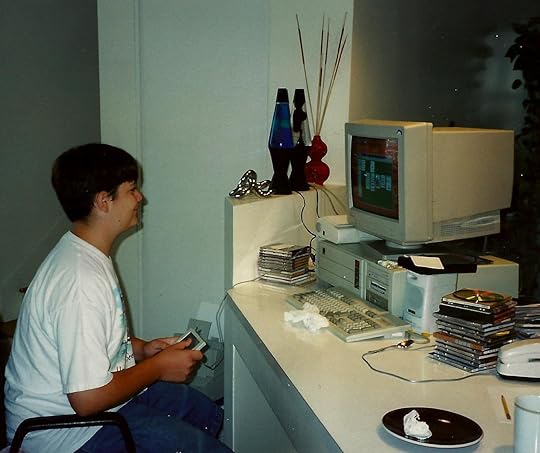
This is actually my cousin BJ’s computer, but if you thought I looked happy playing on his, imagine how excited I was to get one of my own.
I built my first website on GeoCities. I think it was /siliconvalley/hills/4924 (the Wayback Machine link only goes back to 1999 and by then I’d turned it into a MIDI collection website with some banner ads — I kind of hate myself for making this, but there you go). It was originally my fan page for Quake II (fun-fact: Masters of Doom was the book that made me fall in love with the idea of entrepreneurship). There wasn’t much going on there beyond some photos of rocket launchers and railguns with a few tacky animated flaming skulls. I really liked that game. But at the footer was a counter that showed how many people had viewed the website (I’d later learn that most of those “views” came from me reloading the page).
But at the time: what power! I could build something from my suburban bedroom and millions (okay, well, hundreds) of people all over the world could see just how much I loved a video game. That’s how I got interested in making websites. There was no turning back.

A company called Sidea was my first nonfamilial employer (I suspect the real reason my dad wanted a kid was that he needed someone to do all his yard work—and for well below minimum wage, I might add). I later worked a lot of random jobs between high school and college: Pizza Hut cook and waiter (some of the best customer-service experience one can get), deli counter attendant (I was terrible at this and hated smelling like cold cuts after work, despite how much my dog liked it), FedEx warehouse grunt (great exercise, though not very mentally stimulating), and parking booth attendant (get paid to read books? Yes, please! Until the robots replace humans, that is).
But the job with Sidea was one of the most pivotal I ever had–even if the company went bankrupt a year after I started (not my fault!), a victim of the dot-com bubble bursting.
My job was simple: I had to man a booth in the middle of a CompUSA store, armed with a headset microphone and a large computer monitor. I was to demo software and hardware every thirty minutes—regardless of whether or not anyone was listening. Want to give a fourteen-year-old experience in public speaking? Tell him he has to demo random computer products to an entire CompUSA full of people ignoring him.
I can’t tell you how many demos I gave to no one. But I did every one of them as though my boss were watching. In between demos, I killed time browsing the Internet for the latest in Quake II news. For this job I was paid a ludicrous ten dollars per hour. I think I know why Sidea went bust.
But damn if that wasn’t a fabulous way for me to start public speaking. If you’ve experienced the embarrassment of the public speaker’s worst-case scenario (speaking to a roomful of people who are both ignoring you and hating you) before you’ve finished puberty, things are probably going to be okay.
One day I was approached by a man trying to decide between two different mice. I don’t recall the details, but there wasn’t a big difference between them, save the color and maybe another minor feature. I pitched him on his two options with a quip about the bonus “feature” of a different color. He laughed and offered me a job. He handed me his card and said he’d like to hire me for sales. I kept that card in my wallet for years until it finally disintegrated. Fortunately, I scanned it before it did.

Thank you Carlos & Steve. You have no idea how much you did for me.
I didn’t have the heart to tell the man I was only fourteen. When I told my parents about the offer, they told me to finish high school first. I never called Steve Harper, general sales manager for Stanley Foods, Inc., but I had a hunch I was on the right track. I was always tall for my age, and weighing 260 pounds at the time also helped age me up, as much as being heavy may’ve sucked the rest of the time.
Being the tallest guy in the class and having a name that’s usually given to girls (in fact, I was named after a three-time title-winning boxer, Alexis Argüello) are enough to make a person stand out in school, but make him one of the most overweight as well and you’ve got a recipe for something. It easily could’ve gone the other way—self-loathing and depression—but I cared too much about video games and computers to realize how not cool I was.

Pure swag.
I overcame my weight by making jokes about it before bullies could. Girls were trickier, though. I nearly failed geometry because of a cute girl named Erin, who told me (well, she told my best friend, but so it goes in eighth grade) that I was too fat to go to the dance with.
Like a lot of my not-popular-but-not-pariah peers, we developed personalities and pursued hobbies that interested us, because “just being cute” wasn’t an option.
We tinkered on our computers and spent way too much time playing video games with each other. I started a nonprofit called FreeAsABird.org (I’m really regretting the WaybackMachine) that built free custom websites for small nonprofits that had little or no web presence. I e-mailed all my clients cold, and as far as I know they had no idea I was a teenager. After earning a 4.0 my freshman year, I did as little work as I could but still kept my grades up in high school so I could maximize my time spent gaming and running the competitive gaming teams I managed.
Thank goodness, too. Because that was a long-term investment in myself. Most schoolwork felt awfully irrelevant when compared to work that was actually affecting real people and giving me leadership opportunities (albeit digital ones), nurturing the community management skills that would come in handy later.
Of course, all that time in front of a monitor began to take its toll, as my metabolism wasn’t nearly as fast as my buddies’. Our fast-food binges may’ve done nothing but fuel LAN parties (that’s where lots of people bring their computers over to someone’s house to connect directly to a local area network—for gaming). True story: I’d never attended a party that didn’t have “LAN” in its name until college.
This pattern of eating wasn’t healthy. I got tired of being fat by my junior year of high school and decided to do something about it so I could get in good enough shape to play football before I graduated.
Thanks to regular exercise and the abolition of soda and junk food, I lost fifty-nine pounds. My pediatrician (who was always kind of a jerk) couldn’t believe it when he read it on the chart. And to this day I can’t believe how differently people treat me. To have been the “pear-shaped fat kid” for all those formative years and then join the ranks of the easy-on-the-eyes crowd is like turning on another life cheat code. One random night, I bumped into Erin (remember—from eighth grade?) at a movie theater—she literally didn’t recognize me. It felt great. I may have danced a jig when I got back to my seat to breathlessly tell my friends what had just happened.
There Are Nerds in College
I applied to only one college, the University of Virginia. At the time I didn’t give it much thought, but I can’t help wondering how much different life would’ve been if I hadn’t made that seemingly insignificant decision. I had no contingency plan aside from the local community college, much to my parents’ dismay. I included along with my application a CD-R with my “digital portfolio” on it. It’s rather embarrassing, but I’ve now uploaded it for your viewing pleasure. I’ll wait while you go look.
If you were drinking a cup of coffee at the time, I imagine you did a spit-take. If not, please don’t tell me, as I’d like to preserve the image.
Much to my parents’ relief, I got in to UVA. But that’s not the important part. The decision that defined my experience there and made reddit possible was checking the box for “old dorms” on the housing questionnaire. I didn’t know what this meant at the time; old dorms just sounded cooler than new dorms, which were really suites—I wanted something that looked like the colleges I’d seen in movies.
The day we moved in, I spotted a blond-haired guy playing Gran Turismo on his PlayStation 2 across the hall from my new dorm room. His name was Steve Huffman. I was thrilled because I’d worried that no one played video games in college—that this was something I’d have to leave behind as a relic of my childhood. Steve was much less excited to meet me, because he’d seen my name on the door and thought he was living on a co-ed hall. So I was excited that he played video games; he was bummed that I wasn’t a girl. He got over that, and we became best friends. Picking old dorms and ending up across the hall from Steve was one of the best, albeit most random, things that ever happened to me.
You’ve Got to Be Willing to Disrupt (and Be Disrupted)
My dad has been a travel agent for more than thirty years. I distinctly remember dinner-table conversations around the time the Internet started to disrupt the travel industry. As a high school student with a particular interest in computers and technology, I was especially enthralled with all the buzz around the “dot-com bubble.”
Dad, on the other hand, was watching his commissions from airlines get cut all the way to zero. Travel agents used to make good money from bookings that now were going to OTAs (online travel agencies). Because of this disruptive technology, people were now booking their own flights and hotels, cutting out the middlemen—people like my dad.
Just a few years before, my dad decided to leave his position at a large agency to start his own small travel agency. A first-time entrepreneur, he was now facing a dramatic shift in the way his industry did business—and there was no stopping it. The Internet was changing the fundamental business models for the travel industry.
One night he came home from the office particularly frustrated. He’d just learned from a major airline that they, too, would finally be eliminating travel agent commissions altogether. After years of being gashed by these airlines, my father sent them a fax to articulate just how he felt as his business was being eroded.
“Fuck you.”
He doesn’t remember if he put a cover sheet on that fax, but I like to think he did.
Unlike people in other industries, he couldn’t call his lobbyist on K Street and ask him to get a law passed that would make sure all travel agents get a commission. He had to adapt his business model. And he did. To this day, he continues to operate with a focus on business and first-time travelers (usually boomers taking their first cruise). It’s not an enterprise I’ll be likely to take over, especially given hipmunk, but it’s one he and his employees will, I hope, continue to run for years to come.
But those dinner-table conversations made an impression on me. The Internet was a powerful tool, and I wanted to be sure I knew how to use it. The free market is ruthless. But it has to be. It’s up to us to make the most of it.
We must be opportunistic—when disruptions happen we need to identify the new business models and adapt, as my dad did. Or better, we need to be the ones doing the disrupting.
I knew I wanted to be a disrupter.
Sometimes You Just Have to Stand Up
My commercial law professor at the University of Virginia, Professor Wheeler, one day commented in class on the fact that I always volunteered to be the demo person in front of the class when he needed human props. He said how important it was to show up, to stand up—lauding my effort. I just thought it was fun to be that guy in a class of hungover undergrads. It wasn’t that I thought I might get better grades, but I figured I had two legs, so why the hell not get up and use them?
I’d never expected to give a TED talk, let alone at twenty-six years old, but then again I’d never expected to be in Mysore, India, which is where I was in October of 2009 as an attendee of TEDIndia, one of the yearly TED presentations that the organizers host all around the world.
A month or so before the conference I was included on a massive e-mail blast from Chris Anderson, curator of the TED Conference, that included this attention-grabbing nugget:
It is commonly said that TED attendees are every bit as remarkable as those appearing on stage. It happens to be true. That’s why at every conference we invite you to consider whether you have something to contribute to the program—and possibly later to the wider TED community, through the TED.com site.
So there at my laptop I raised my virtual hand—so to speak—and submitted a pitch for a three-minute talk to TED. These are the palate cleansers in between the more heady and often very emotional eighteen-minute TED talks. I figured I’d better get right to the pitch. Here’s what I wrote:
The tale of Mister Splashy Pants: a lesson for nonprofits on the Internet. How Greenpeace took itself a little less seriously and helped start an Internet meme that actually got the Japanese government to call off that year’s humpback whaling expedition. People manage to sell entire books on the subject of “new media marketing” but I only need three minutes—with the help of this whale—to explain the “secret.”
How could they resist a name like Mister Splashy Pants? Splashy to his friends.
I figured they must’ve been totally floored with awe, because I didn’t hear back for a month. Was this just their way of saying no? I was already in India at this point, so I sent a quick “ping” e-mail to see if I could get a yes or no.
“Congratulations. You did get accepted.”
Hot damn, I had twenty-four hours to write and rehearse a talk people practice for months…
Better turn on some South Park.
Thanks to VPN, I could watch South Park from south India. The episode was called “Whale Whores” (season 13, episode 11), and it satirized the Animal Planet documentary-style reality show called Whale Wars (oh, puns!), which features the Sea Shepherd Conservation Society, an organization that harasses Japanese whalers in an effort to protect marine life.
In the episode, after hordes of Japanese storm the Denver aquarium during Stan’s birthday and slaughter all the dolphins (am I really writing about South Park right now? I love this country), an enraged Stan implores his friends to join him in protecting the dolphins and whales, which the Japanese seem so intent on eradicating.
Stan’s friends are not interested until Stan joins the cast of Whale Wars, at which point Cartman and Kenny pretend to be whale-loving activists in order to milk some of the fame associated with the show. They volunteer, despite admitting earlier that they “don’t give two shits about stupid-ass whales.”
I grabbed a screen capture of Cartman, in a Save the Whales shirt, proclaiming his love of whales; Kenny is beside him, dolphin lover (sic) scrawled on his chest.
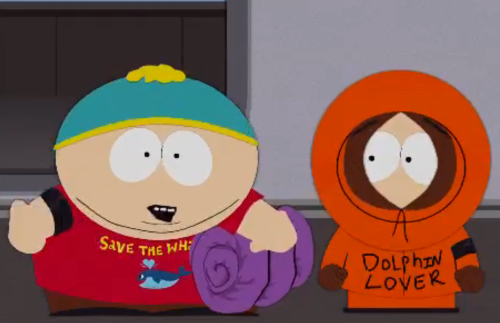
That image reminded me of what was then one of the biggest events on reddit—voting for the name for a humpback whale that Greenpeace was tracking. This event has since been eclipsed by other events, such as the “money bomb” donation of over half a million dollars to DonorsChoose.org or fund-raising for three-year-old Lucas Gonzalez, who needed a bone marrow transplant. But the story of Mister Splashy Pants was a special moment in reddit’s development and proved to be a prophetic tale of the power of social media: for an idea to truly become mainstream, it needs to go beyond the early adopters—in this case, whale lovers like Stan—and also include those who want to join the trend.
A lot of people rag on PowerPoint (often rightfully so). But in the right hands, this much-maligned communication tool can actually be incredibly entertaining (and even informative). The problem is, most people don’t understand how to use it, which sets the bar for PowerPoint presentations really low. Here’s my philosophy: lots of big pictures, text, and tons of slides. For my TED talk, I had room for no more than a few words on each slide—and they had to be in 86-point type, minimum. Forty-two slides—a good sign, even though it meant I had only a little more than four seconds for each slide.
There was going to be a giant TED sign on the stage behind me. This could make or break my public speaking career. And I was going to be on the same stage where the brilliant statistician Hans Rosling, using beautiful data, emphatically demonstrated how India ascended to economic superpower status—meanwhile, I was going to talk about a whale named Mister Splashy Pants. No pressure.
I finished before sunrise and took a power nap. When I awoke I began feverishly practicing with my timer. I missed all the morning talks. I was terrified of Chris Anderson, who famously cuts off speakers when they go on too long. As someone who routinely talks more than I should, I didn’t want my talk punctuated by a giant cane pulling me offstage.
I’d later learn that TED does not in fact use a giant cane.
I don’t remember the talk before mine, because I was so busy trying to remember what I was going to say.
Why are my hands shaking?
Chris Anderson introduced me as Alex. I hate being called Alex, but I smiled and took the stage, trying hard not to trip on the way. When you’ve grown up embracing your unisex name (okay, it’s predominantly a woman’s name here in the United States), it’s incredibly vexing to hear someone shorten it to the male version. I’m a dude named Alexis; please call me by my name. Now I was thinking about Alexis Argüello, the three-time world champion boxer my father named me after, and I wondered if he ever had the same issue growing up in Nicaragua—shit, I’m supposed to give a talk right now.
Remember, it can’t go worse than a giant room of CompUSA shoppers actively ignoring you.
That got me started. Get to it, Ohanian.
“There are a lot of ‘Web 2.0 consultants’ [I made air quotes with my fingers] who make a lot of money—in fact, they make their livings on this kind of stuff. I’m going to try and save you all the time and all the money and go through it in the next three minutes, so bear with me.”
I breathlessly shared the story of Greenpeace’s dogged efforts to raise online awareness of their effort to stop Japanese humpback whaling expeditions. They wanted to track one particular whale on its migration and humanize it with a name chosen by their online community. Greenpeace staff chose about twenty very erudite names—like Talei and Kaimana (which means “divine power of the ocean” in a Polynesian language)— and then there was Mister. Splashy. Pants.
I enunciated each word one at a time for full comedic effect. Laughter. They’re not hating this.
Once a reddit user discovered the poll and submitted it to reddit.com, a surge of votes flooded in for this obvious favorite. Who doesn’t want to hear a news anchor say “Mister Splashy Pants”?
Greenpeace wasn’t pleased. They insisted on rerunning the voting process, which only galvanized us. I changed our reddit logo from a smiling whale to a more combative version.
For any scientists reading this:

This time, polls closed with Splashy having an even more commanding lead.
Oh no, I’m running out of time. Please let them be gentle.
Eventually they relented and let the online favorite win (sometimes you just have to let yourself be disrupted, remember), but at this point they’d inadvertently created a brand that excited far more people than just Greenpeace fans—the message had spread far beyond whale lovers. In fact, the Japanese government actually called off the whaling expedition.
Everyone who creates something online has lost control of their message but in the process has gained access to a global audience. Mister Splashy Pants is a story about the democratization of content online—starring a whale—and it demonstrated how little control we have over our brands. It turns out we never had control, only now we realize it. Before the social web, we had little idea of what people actually thought about us—now we know, and when like-minded people band together, they wield a really big stick.
The talk is over. Applause. Even a few “Woo!”s from the crowd.
Nailed it. I’d given a few non-CompUSA talks before then, but once the video of my TED talk hit a million views and was front-paged on reddit, I became a known “public speaker.” In a brilliant illustration of my argument, the video was submitted to reddit with the following headline: “Nutjob mistakenly allowed to give TED Talk, he rambles for over four minutes before being carried off the stage.”
I have a lecture agent now and get paid more for a speaking gig than I did for an entire year’s work at Pizza Hut. It’s a little bit insane, but then I remember that I’m still getting paid less than Snooki1, which makes me really question things.
I still get nervous before I get onstage—I just know how to better handle the nerves now. In truth, it really is all about practice. Once you’ve been onstage enough times and make sure you’re always well rehearsed and armed with the feeling that you really know what you’re talking about, it then becomes all about polish. Listen to yourself. I listen (not watch; I want to focus on the words) to every talk I give once afterward to see where the “ums” and “you knows” crept in. I’ll pay attention to jokes that didn’t work and others that worked better than expected—was it the joke or the delivery? Then I put that talk out of mind. Test, analyze, and repeat.
The Internet offers a wealth of great speeches, all freely available with just a few keystrokes. Find your favorite speakers and study them. I notice the way Jon Stewart disarms an interview subject with a joke before hitting him with a knockout punch. President Obama really knows how to hit the Pause button at the right moment for maximum impact. When used well, silence is powerful. And when I learned that Louis C.K.— easily one of the best comics of our generation—trashes all his material every year and starts anew, I knew I needed to keep from getting lazy and recycling entire talks. Louis does it because, he says, “The way to improve is to reject everything you’re doing. You have to create a void by destroying everything; you have to kill it. Or else you’ll tell the same fucking jokes every night.”
Being a stand-up comic is infinitely harder than giving a talk or a speech, so if he can stay that on top of his game, why can’t I?
There Are Much Harder Things in Life Than Being an Entrepreneur
Growing up, I had the words “lives remaining: 0″ written on the wall of my room. If life were a video game, that’s how it’d indicate this is the only chance left.
I’m lucky because I got that lesson when I was twenty-two years old and just a month or so out of college, feeling about as immortal as someone could.
But then everything changed with a phone call.
Why’s Mom calling me? She should be getting ready for her vacation trip to Norway.
She’s crying.
Max, our wonderful mutt, had to be put down.
Because I’m an only child, Max became my mother’s favorite when I left home for college—a position in her heart I could never reclaim. She absolutely adored him, and our family did everything we could to help him fight the Cushing’s disease that had finally taken its toll.
My mother was understandably distraught. I told her I loved her. I understood why she had to do what she did to our beloved dog and, although it didn’t work out that I could be there, I was grateful that she was. She had some more errands to run before meeting up with Dad and heading to the airport. She’d try to get through them the best she could, but I knew it was going to be hard for her to go on vacation.
At least it happened before she got on the plane.
My dog had just died. It was going to be a rough day in Boston. Startup life is extreme enough—every morning one wakes up thinking today’s the day you’re conquering the world—or today’s the day you’re doomed.
I got through that awful morning. I don’t remember what I was doing at the time, but my phone started buzzing again in the late afternoon.
Why’s Dad calling me? He should be at cruising altitude with Mom.
They’re in the hospital.
Howard County General.
On any other night Mom would be working there; she’d been a pharmacy technician there on the night shift for the last seventeen years.
Now she was missing the vacation she and my dad had planned for years.
She’d had a seizure in the dressing room of a department store, and an attentive clerk had called 911.
At least it happened before she got on the plane.
The initial brain scans revealed a tumor. The culprit in her skull was an insidious monster called glioblastoma multiforme. Such an ugly name. They were going to keep her overnight for more tests. She’d likely have surgery soon thereafter. I never should have done the Google search, but I needed to know what my parents would inevitably struggle to tell me.
I bought a ticket for a flight down first thing the next morning, but until then I was stuck in Boston. That night Steve and I tried to get our minds off things and went down to a local bar to watch our favorite team play their archrivals on Monday Night Football. Our Washington Redskins versus the Dallas Cowboys.
It was a really boring game. And we were losing it. So much for even a brief respite from the shittiest day of my life.
By the fourth quarter, there weren’t many TVs with the game still on (we were in Boston, after all). Back in Columbia, Maryland, my dad had already called it a night. He didn’t need any more heartache.
Steve and I had nowhere else to go and needed distraction—any distraction—so we kept watching. It was fourth and fifteen, and we were down 13–0 with less than four minutes left (non–football fans: just know that this means an exceptionally dire situation). Just then, Mark Brunell, a quarterback not known for his arm strength, hurled the ball downfield more than fifty yards to Santana Moss in the end zone.
It was 13–6!
But no one on the field was celebrating—and with good reason. There was hardly any time left, and we were still losing. Even the Cowboys’ mascot was taunting us with a dramatic look at his wrist to remind us that there wasn’t enough time left for our touchdown to matter.
But Steve and I kept cheering. What the hell. They had finally given us something to cheer about. That was our first touchdown of the season! And we’d been drinking, which always helps. We made the extra point, and it was almost a ball game. But that jerk in the Cowboys costume had a point.
Dallas ended up punting quickly, thanks to a stingy Skins defense, and we had the ball again (football novices: that’s our time to go on offense and score points).
First and ten from our own thirty-yard line. One of the commentators, John Madden, couldn’t even finish his run-on sentence before Brunell threw the exact same pass fifty-plus yards down the field right back to Moss, who again beat the coverage.
“And Santana Moss for a touchdown! Wow!” Al Michaels couldn’t believe his eyes as Moss hustled into the end zone.
At this point Steve and I were screaming. We were also the only two people still watching the game, I think.
Suddenly it was 14–13 and we were winning.
Winning? What?
Even when all hope seemed lost—see what happened there—we had to keep hoping, because that was all we had. As much as I wish I could affect the outcome of sporting events from my seat, there’s nothing I can do but cheer at the right times.
But it wasn’t over. Life isn’t a storybook. And what happened next is going to be exceptionally difficult to describe for non–football fans.
The Cowboys weren’t about to be upset so spectacularly in their own house on national TV. They briskly marched down the field, nearing field-goal range as the time kept ticking down. They didn’t need to reach the end zone; they needed to get just thirty-five yards or so from it. As long as they could kick a field goal, they could walk off the field as victors and dash our hopes.
They were that close, but only for a second.
A third-down completion to Patrick Crayton secured a first down and also put the Cowboys in field-goal range. Crayton got a step beyond the marker and then…contact.
BOOM!
You could hear the pop on the television broadcast. Sean Taylor, a lean and hungry safety, delivered a brutal—and legal—tackle that popped the ball loose, resulting in an incomplete pass.
BOOM!
I started yelling. Spilling beer. Probably also spitting a little. It was obnoxious because they kept replaying that hit and I kept yelling BOOM! louder with every replay.
Steve was yelling, too. Everyone else in the bar was hating us. We didn’t give a damn.
Later, I got my hands on the high-def footage of Taylor during and after that hit. He pops up, electrified. That fire. That heart. It’s something awesome when you watch a human—just another carbon-based life-form— doing what he does so well. And loving it.
That hit took all the air out of Cowboys Stadium, from the fans to the field. The Cowboys turned the ball over on downs, and Redskins players poured Gatorade on Coach Gibbs. Not a typical week-two celebration, but we thought it was appropriate.
Steve and I went home singing our fight song, and I had the joy of surprising my dad with the news the next morning. He’d never walked out on a game before and never would again.
I don’t believe in signs, mostly because I don’t think I’m worth all the trouble. But I was inspired.
Sean Taylor saved the day that night, doing what he loved and doing what he was so clearly talented at. It gave me a little bit of happiness on the saddest night of my life and confirmed that it’s never over until it’s over.
So I’d better not give up. And if I can find something I’m good at and love doing, I’m going to put everything I have into it.
Sean Taylor died two years later. He was shot by an intruder while at home with his girlfriend and daughter. He was twenty-four; just a few weeks older than I was at the time.
We often use words like bipolar and all-consuming to describe startup life. Fools compare it to combat, and over drinks even the more reasonable among us still veer into hyperbole about how hard it is to face the day some mornings. I’ve never lain in bed in self-pity, though. Even after that night I didn’t, because I knew back in Maryland my mother and father were dealing with a very different kind of morning. Perspective. My mom, the kindest person on earth, had been told she would die before seeing her grandchildren, and yet the first words out of her mouth when she saw me were “I’m sorry.”
That’s the kind of person she was. I knew I’d lived a rather stress-free life until that point, and I knew that that would have to change. I just didn’t think it’d happen all at once. My mom came to this country when she was twenty-three because she was in love with my dad. After a few years of living together while she was still an undocumented alien, they secretly married at City Hall in lower Manhattan, and only later did they have the “public” wedding for their families (surprise, Grandpa!). Eventually the cost of trying to raise a child in New York City (even in the boroughs—Brooklyn and then Queens) proved to be too much, and my parents moved to the suburbs of Maryland, where my dad’s modest income could go much further.
My father had a degree in urban studies and architecture from Antioch College, and my mother wound up getting her GED in 1980, just three years before I was born. She went on to work night shifts as a pharmacy technician, sleeping only a little so she could be present for more of my waking hours.
After all that, my mother—who had supported me my entire life, filled me with confidence, and loved me dearly—was telling me she was sorry she’d inconvenienced me by getting terminal brain cancer because it was something else I’d have to deal with?
Being an entrepreneur was the best decision I could’ve made, because not having a boss gave me the freedom to make my family a priority without compromising my work. I got a lot of use out of that 3G USB stick and laptop. As long as I had those two things, I was in the office, whether it was bedside at Hopkins or in the reddit headquarters in Somerville.
I write this all as a precursor to my story—to hell with chronological order—because as empowering as the Internet is (and boy, is it empowering), we must all still succumb to a common mortality.2 I would trade anything to have my mom back, but in lieu of that, I can only work to honor her a little bit more every day.
To be reading this book, thinking about how to use this great platform, the Internet, to share your world-changing ideas, ideally from a comfortable seat somewhere, is itself a great luxury. We’re living in a time of unprecedented opportunity across the globe that happens to coincide with a time of tremendous misfortune.
Let’s make the most out of this great hand we’ve been dealt, eh?

Ask Me Anything!
That’s the end of my first post on this blog. Round two is coming soon. But in the meantime…
You may have heard about a little thing we do on reddit called an “AMA” (Ask Me Anything). Tim did one a little while back that went quite well, watch his answers here. Now I’d like to open up my brain to all of you here in the comments section of this post. Ask me anything between 9am-1pm PST (12pm-4pm EST) here in the comments section and I’ll answer you — promise!
###
Large parts of this post were adapted from Alexis’ book: Without Their Permission: How the 21st Century Will Be Made, Not Managed.
About the author:
Alexis Ohanian is a startup guy making the world suck less: reddit, breadpig, hipmunk, Y Combinator. Investor, speaker, host of Small Empires, and loves his cat Karma.
This is a cultural reference from the early twenty-first century. Readers in the mid-twenty-first century and beyond will probably know her as President Snooki. I mean no disrespect.Except for the sentient robots. They’re going to be fine. Don’t shed a tear for them, because they wouldn’t for you—and they can’t; that’d be a lot of needless engineering.






September 16, 2013
Going From Wantrepreneur to Entrepreneur — A Challenge
This week will be Entrepreneurship Week on this blog.
To start us off, this post is a benevolent kick in the ass. I’ll preface the kick with something I wrote in The 4-Hour Workweek:
For all of the most important things, the timing always sucks. Waiting for a good time to quit your job? The stars will never align and the traffic lights of life will never all be green at the same time. The universe doesn’t conspire against you, but it doesn’t go out of its way to line up the pins either. Conditions are never perfect. “Someday” is a disease that will take your dreams to the grave with you. Pro and con lists are just as bad. If it’s important to you and you want to do it “eventually,” just do it and correct course along the way.
But talk is cheap, isn’t it? That’s the whole point, so let’s get to the action.
###
In 2009, Tobias Lutke, CEO of Shopify, and I developed the Build-A-Business Competition to transform would-be entrepreneurs into real entrepreneurs. Now in its 4th year, the competition has created more than 15,000 businesses that have sold more than $60 million in product (!).
Several readers of this blog — first-time business owners — have ended up generating millions of dollars each… some as side gigs to their full-time jobs! A few examples generated $250,000+ per month.
You don’t need need experience, and you don’t need a bunch of money. You just need to take the leap: join the competition, decide on your product category, listen to advice from mentors and fellow competitors, and sell the hell out of your product. That’s it.
“Whatever you can do, or dream you can, begin it. Boldness has genius, power and magic in it.”
- Johan Wolfgang von Goethe
Intangible products can also be sold in the competition, including digital downloads, services, and subscriptions. Make sure you check out the Shopify App Store (apps.shopify.com) for tons of great plugins.
This year’s competition is in partnership with Huffington Post, so there will be even more PR and exposure. Past participants have been featured in everything from Fast Company to The New York Times.
Who are your mentors? These killers, thrillers, and 100-dollar billers:
** Arianna Huffington (The Huffington Post)
** Mark Cuban (Dallas Mavericks, Shark Tank)
** Daymond John (FUBU, Shark Tank)
** Chase Jarvis (Photographer, Director)
** Tina Eisenberg (Swissmiss, CreativeMornings)
** Gary Vaynerchuk (Wine Library, Vaynermedia)
** Selita Ebanks (Victoria’s Secret Angel, Cause Marketer)
** Lil’ Jon (DJ & Producer)
** Amber Mac (TV Host, Author)
** Tim Ferriss (Angel Investor, Bearclaw Eater, Author: The 4-Hour Workweek)
The Build-A-Business competition runs from October 1, 2013 to May 31, 2014, with each of the mentors providing exclusive advice and guidance along the way. In addition to $50,000 cash prizes, the nine competition winners will receive an expenses-paid VIP trip for two to New York City to meet their mentors. It’s one hell of a party. The competition is open to people in the US, Canada, UK, Australia, and New Zealand.
Click here for full details.
Time to explore entrepreneurship, don’t you think? If not now, when? What’s stopping you? Let us know in the comments, and maybe we (including other readers) can help.
###
Odds and Ends Elsewhere:
4-Hour Chef for Whaaaa?!?:
$35 retail for less than $15? Yes, my friends. New coupon–get an additional $5 off the full-color hardcover of The 4-Hour Chef. Here it is.






September 10, 2013
The BitTorrent Strikes Back: The 4-Hour Chef Audiobook Goes Loose
As a thank-you to all of you today, I am today releasing the audiobook of The 4-Hour Chef…for free.
This includes almost 10 hours of recording: all of the chapters on accelerated learning, all of the ridiculous experiments and related stories, and much more.
I’m partnering with BitTorrent again to bring you a bundle of goodies. The full unlocked bundle for this release is 5.4 GB of free content (!), whereas my first BitTorrent release for the print edition was 187 MB. HD instructional videos? Bonus PDFs? You got it.
The audiobook also features guest narration from one of my heroes–bestselling author Neil Gaiman!
I’ve written about Neil before (read my gushing here), and if you’re not a fan yet, you will be. Special thanks to Neil, his amazing assistant Cat, and also to Max Adams, who acted as Twitter matchmaker:
@CelluloidBlonde tell @tferriss that I’m in.
— Neil Gaiman (@neilhimself) January 27, 2013
I hope you enjoy the audiobook as much as I enjoyed producing it. Here’s the announcement and download links from BitTorrent…
The 4-Hour Chef: Accelerating Learning for Free
What’s the value of a free read?
Last November, we partnered with best-selling author Tim Ferriss to find out. We handed out sections and drafts from his new book, The 4-Hour Chef, to BitTorrent fans. In turn, 880 thousand of them checked out the hardcover on Amazon. And 2012′s boycotted book about meta-learning hit 2013’s bestseller lists, from the New York Times to the Wall Street Journal.
A free read, it turns out, is a powerful thing.
So, what’s a listen worth?
We’re letting the people decide. Today, Tim Ferriss is giving away the full audiobook of The 4-Hour Chef, complete with six hours of HD creativeLIVE tutorials that bring the 4-Hour lessons to life. Call it an experiment in anti-cannibalization. Our goal is to see how different formats can feed off of, and feed, one another.
Here’s the deal:
Check out Tim Ferriss’s page on BitTorrent. You can instantly download several chapters of The 4-Hour Chef audio, Part 1 of the full-color ebook (62 pages), and three workshop videos from creativeLIVE.
Subscribe to the book’s email list, and unlock the full audiobook narrated by Ferriss, Neil Gaiman, and Adam Verner, plus ten additional workshop videos. It’s everything you need to master everything, basically: from the kitchen to the basketball court. Except the hardcover. (You’ll need to go here for that.)
Download The 4-Hour Chef Bundle
Instant Download:
The 4-Hour Chef: eBook Part 1 [PDF]
The 4-Hour Chef: AudioBook Introduction [Audio]
The 4-Hour Chef: creativeLIVE Workshop, Day 1 [3 Videos]
Unlocked Bundle
The 4-Hour Chef: Full AudioBook [Audio]
The 4-Hour Chef: Creative Live Workshop, Day 2 [9 Videos]
###
Also Tonight (9/10) from 6-7pm PT (9-10pm ET)…
I’ll be doing a live Q&A on Twitter for 60 minutes. Ask me anything. Really. To make my day, download the audiobook first and let me know what you think! Here’s how it works:
1) Follow @merrelloutside. I’m partnering with them for this, so you’ll need to follow them to see my responses to questions.
2) Ask questions in the following format:
“@tferriss @merrelloutside [insert question]? #asktim”
3) I’ll answer ‘em as fast as I can! Hope to see you tonight.






September 7, 2013
An Ideal Day (or Weekend) in San Francisco – 16 Fun and Weird Activities
San Francisco is my favorite city in the world, bar none.
I love NYC, I love Bali, and I love Buenos Aires, but SF is the place for me. And since I’ve been here for 10+ years, I get asked a lot: what should I do when I visit?
This post will highlight some of my favorite things.
Recently, I joined forces with InsideHook – the “essential lifestyle guide for adventurous and discerning men.” I’ll be their SF curator (and advisor), helping them find and share hidden gems in gadgets, food, outdoor adventure, and more. Subscribers get one hand-picked item per day via email. That’s it.
I encourage you to check it out here. At the very least, you’ll get an education in headlines, as their copywriters are amazing.
Now — onward!
Below is one of my ideal days in SF, planned out so everything is within close walking distance.
A Damn Fine Day
Wellness FX Blood Analysis
Activity: Blood-drawing and high-end diagnostics
Description: Visit one of Wellness FX’s labs for a blood drawing to produce an in-depth analysis of your state of health. Results offer a wide range of information, from cholesterol and hormone levels the to an analysis of your body’s electrolytes and vitamins.
Pricing: $29-$529+

SideWalk Juice
Activity: Smoothies, juice blends and more at 21st/Valencia.
Description: SideWalk provides made-to-order juices, smoothies & kombucha juice blends that are as delicious as they are beneficial to your physical and mental health. My favorites? The “Green Machine” and the “Jake Shields,” named after the local UFC fighter (“The strongest kale drink in existence!”).
Pricing: $4.25-$7.00

Street Art Tour
Activity: Walking tour of two alleyways with notable graffiti artwork with Dan Pan. We focused on the Mission district.
Description: Guided walking tour with Dan Pan, founder of 1AM Gallery’s new street-art app. The app allows you to find nearby street art, as well as take pics and have users tell you the artist (very cool). Try Clarion Alley as a starting point, which is run by an artists’ collective.
Pricing: The 1AM app is free.
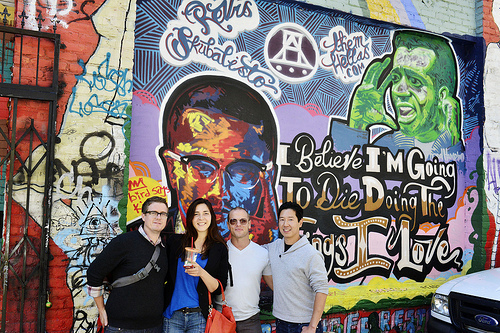
Mission Cliffs Climbing
Activity: Indoor rock climbing
Description: Indoor rock climbing at Mission Cliffs, a sprawling gym located at 2295 Harrison St.
Pricing: $20-$160
Lunch at Salumeria
Activity: Lunch at Salumeria
Description: Salumeria is a 20th St. deli and larder that marries the culinary traditions of Old World Italy with the trend-hopping foodie culture of contemporary San Francisco.
Pricing: $6-$17
Drinking!
Activity: Adult beverages with friends
Description: Enjoying social lubrication with new or old friends. A fine tradition as old as time. Some of my favorite spots include:
St. Vincent (Mission)
Hotel Biron (Downtown-ish, Hayes Valley)
Trick Dog (Mission; Disclosure: I’m an investor)
Bourbon and Branch (Tenderloin)
Pricing: Varies.
4 More Free Activities
Hawk Hill: where you can take a bike ride into our Cold War past.
Once upon a time, Fortress America dotted San Francisco’s hilltops with Nike missiles and radar outposts. Of course, those missiles were never fired — but you can still visit the rusted remnants of their vigilance if you bike up to the SF-87C radar outpost, the best-kept secret of the Marin Headlands coastline.
The Lands End Trail, where you’ll find the best maze in the Bay.
Truck up the Great Highway to stretch legs and strut your knowledge of the Sutro Baths. Hike up the Land’s End Trail from the ruins to the labyrinth at Eagle’s Point. It’s only a couple miles round trip, and damn fine panoramic views’ll be in serious supply.
California Cheese Trail: pairs well with Mission Cheese (below) or your vineyard of choice.
As an adult, your knowledge on cheese should surpass the realms of Lunchables and Easy Mac. Showing you the whey: the California Cheese Trail app from the folks at the Marin Agricultural Land Trust, available now for iPhone and Android. If you’re up for spending a few bucks on cheesy delights, visit Mission Cheese on Valencia.
The Bay Bridge’s long-awaited East Span.
The opening of the Bay Bridge’s new East Span has been years in the making, and now it’s officially open, welcoming pedestrians and cyclists of all stripes and offering exclusive access to Yerba Buena Island.
6 More Paid Activities
Vantigo: Tour beer breweries in a cherry-red VW Bus.
Indulge your nostalgia for simpler days with Vantigo, now offering tours of some of the Bay Area’s best microbreweries via a pristine ’71 VW Vanagon.
Pricing: $85 per person
Trumaker and Co.: Shirtmakers who come to you.
Restock your shirt library with Trumaker and Co., a custom shirtmaker with a highly mobile fleet of outfitters. It’s simple: you make an appointment, they send a tailor your way.
Pricing: from $98, free outfitter appointment
Boatbound. Because every man should own a boat…if only for a day.
Herein: your guide to using BoatBound, a new AirBnB-style boat rental service. SF Bay or Half Moon Bay?
Pricing: from $250 per day
Big Sur Roadhouse. The Big Sur getaway you’ve been looking for.
There’s a sprawling new Cajun restaurant in Big Sur. There are also some skinny-dip-friendly hot springs down the road. That gives you at least two good excuses to visit.
Pricing: from $50 per person
Mikkeller. It’s like a beer tour of Europe in a single bar.
The legend of Danish brewery Mikkeller has been growing across the pond for some time; they just opened their first North American alehouse in San Francisco.
Pricing: varies
Shelter Co.: Romantic private camping service with tent butlers.
Shelter Co. offers completely customized luxury camping experiences. You want tent butlers? They got tent butlers. You want a private island? They will rent you a private island.
Pricing: from $2000
Let’s Talk About This…
Want more activities, rare finds, and goodies? Sign up for InsideHook and let me know what you think. I’ll also choose one person who signs up for a 30-minute phone call with me.
Then what? How about you try my Pacific Northwest roadtrip from SF to Whistler? Damn, I love the Bay Area.
What’s your favorite city in the world, and what are your favorite 2-4 activities?
###
Related Posts:
How to Live Like a Rock Star in Buenos Aires
How to Hack Tokyo for Less Than NYC
How to Travel Through 20+ Countries with Free Room and Board
How to Travel to Exotic, Expensive Cities on $50 a Day (e.g. Paris, Hong Kong)






August 19, 2013
Burning Man Winners and Charity:Water Finalists (Please Vote!)
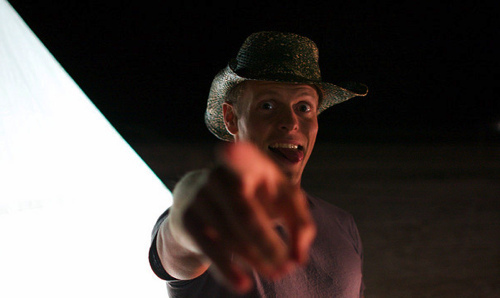
Goofing around at Burning Man ’08. Ah, the memories…
This is just a quick announcement post.
Below, please find the winners of Chip Conley’s Burning Man 2013 contest (See “28 Festivals and 8 Reasons They Can Change Your Life“), as well as the finalists for the Charity:Water roundtrip ticket anywhere in the world.
Please vote for your favorite Charity:Water finalist! The most votes wins — deadline is this Friday, Aug. 23 at 5pm PT.
First, Burning Man Tickets — Enter Chip
Wow, what an impressive and heartfelt collection of stories about how festivals have or could transform your lives! Thanks to the 250 people who shared with us. This was a difficult choice and, while only one person wins the two tickets to Burning Man 2013, I’ve selected one winner and three alternates depending upon whether the first place winner can use the tickets (since the event starts in a week and ends on the Monday of Labor Day). Congrats to these four! Tanis, DW, and Rebecca, we will immediately reach out to you if the person above you on the list can’t use the tickets.
For everyone else, take a look at Fest300 and imagine which festival might transform your life or give you a whole new perspective on how you could live your life. In this era of digital overload, festivals offer you the opportunity to connect more deeply with yourself and others.
FIRST PLACE…
Catherine Anne (aka Squirt Gun) — August 15th, 2013, 3:19 pm
I first attended Burning Man in 2006 and fell in love with the boy next door. Now we are married. I attend annually. As a sign language interpreter I noticed there were no services for Deaf Burners to fully connect with fellow Burners, so we created Playa Terps to provide interpreters. The two tickets will go to Deaf Burners who want to go this year. It’s not just about how Burning Man has changed my world, but how it is changing theirs too.
SECOND PLACE
Tanis M — August 16th, 2013, 9:40 am
Burning Man! I’m yearning, man!?
The fires of my soul never cease learning, man!?
First solo trip, In Germany I landed?
A journey of self and soul, my mind expanded.?
Wolkenkratzer Festival,?
One of the best of all…?
All of us souls, humans the same?
Dancing underneath Heaven’s warm rain?
Tears shed, and difference reside?
Teaching Oneness, our truthful ties.?
But Burning Man! I’m yearning, man!?
My soul craves this grand epitome,?
To bring present every bit of me.?
My bags are packed, I’m ready to go?
To Burning man, where I’ll continue to grow!
THIRD PLACE
dw — August 15th, 2013, 2:13 pm
In 2002 i lost my brother with whom i had first discovered festivals and travel for the sake of the soul. The loss was the result of an auto accident, and i was to blame. In the intervening decade i have attempted to restore a semblance of normalcy and happiness, with varying degrees of success and failure. My partner in life has helped me with this process, and once again we are traveling to festivals and finding the joy in life. Being immersed in burning man would help her and i on my journey towards forgiveness and light. thank you.
FOURTH PLACE
Rebecca Carter — August 15th, 2013, 11:06 am
My first burn was with this beautiful man, he warped my view of love and how I saw the world into something more giving and beautiful than I had ever imagined. Few years later we are pregnant and his father passes from aggressive cancer. We want to take his dad to the temple. It would be the best birthday gift I can think to give my husband. his birthday is Aug 26th. Help me give back to my giving husband and say Goodbye to his dad the only way a burner can. Its been too long. Thank you.
Second, Charity:Water Finalists — Time to Vote
You guys ROCK. I cannot begin to express how awesome you are. In just over a week, you raised more than $65,000 (including the promised $8,600 of my own money) to help solve the world’s clean water crisis.
As also promised, I’m giving away a free round-trip ticket anywhere in the world that Star Alliance flies, which is just about everywhere. There is no expiration date on the trip, and therefore no rush on deciding where or when to go. If the winner likes, I’ll fly them to San Francisco to have dinner with me, but other places might be far more interesting 
To pick the grand-prize winner, I need your help. Please vote for your favorite below! Deadline is this Friday, Aug. 23 at 5pm PT. The person with the most votes wins. There were so many great submissions that I chose six finalists instead of five. Keep in mind my criteria, summarized here:
Spread the word by sending people to the fundraising blog post or the donation page. Leave a comment telling me what you did (Facebook, Twitter, blog post, e-mail blast, e-mail signature, encouraged employees/friends to do the same, company donation matching, etc.). Measurement of any type gets huge bonus points.
HERE ARE THE SIX FINALISTS (THERE COMMENTS BELOW THE VOTING BOX)
(If you can’t see the form below, please click here)
Fill out my online form.
Sébastien ‘Go France’ Night
To me, education means helping someone to share their unique gift and be the best person they can be.
Half of my family are teachers (both my mom and dad are from families of eight, so that’s a whole lot of teachers), and so is my fiancee.?I teach communication skills and own or have owned 4 other businesses that are all education-related.?So learning and teaching is my life’s work and passion. That’s also what education means to me.
I scheduled to post this comment exactly within the deadline and I’m posting this right after crunching the numbers after the 1000th donation. If I messed up my time zone difference calculations, please still pick me.
This campaign for Charity:Water was very important to me because I’m just coming back from a 6-month trip around the world.? I’ve seen poor communities struggling in Brazil, South Africa and India and I can’t imagine how hard it must be to walk miles for clean water instead of just opening a faucet and having all the time in the world to run a business and create value like we do.
So I participated in your campaign because I wanted to send you a “Thank You” that would be meaningful.? Five years ago I read 4HWW and I dreamed of traveling the world with a beautiful woman on my arm… and this year I was able to do it while still growing my business (half a million euros in sales last year, and even more profit this year although I was working only 1 day a week)
So Here’s what I did to send you this “Thank You!”/”Pick Me” message
I have a whole lot of Facebook fans but after 5 years of raising money for charities with my business, I know that posting to FB doesn’t work. ?Nor do most of the other “weak-link” strategies (sending the link to friends so they check it out, twittering, etc)
All the 4- and 5-figure short campaigns I’ve succeeded with, used strong-link strategies and a template.
What I call a strong link is actually sending a one-to-one (or one-to-few) communication to someone who is on target with the message, and the 4 most important elements of the template I use are  - What is in it for the person?- What is in it for the beneficiary of the charity work?- What is in it for me.?- Call to action (with just one actual action to commit to)
- What is in it for the person?- What is in it for the beneficiary of the charity work?- What is in it for me.?- Call to action (with just one actual action to commit to)
I’m always transparent regarding what’s in it for me.?In this case, I candidly talked about my trip, and explained that I wanted to send Tim a “Thank you” note that would get noticed.
So I made a list of close customers and contacts, and wrote a personalized email to each of them.?(I had it sent, did not email each of them myself, because I’m email-free).
I wanted to be able to track numbers (a second nature for me) so I told people to add “Go France” before their name.?So if you wondered how all these crazy French people got there… now you know.
Something very interesting about my clients and contacts is that almost every single person that I knew would be interested in such a cause is an entrepreneur, investor or business owner. So I insisted on the “creating entrepreneurial callings in kids and women that would otherwise spend their life walking for water” angle.
Since I was bringing French people in, I asked them to donate EUR 36 EUROS (hence the USD $48 donations).?I did not link to the main Charity:Water page (one of my rules for charity campaigns : eliminate the clutter) ; I told everything in my very long email and gave them straight “payment page” links to donating $48.?(I split tested “$48, $480, or $1?, and “$48,$100, or $1?, and “$48, or $pick your own amount”. Guess which won?)
The results :
91 donors (9% of the entire campaign outside of Tim’s own donation) ?$5000, 36 in donations (11% of the entire campaign outside Tim’s own donation)
82% of the donations came from my closest customers – a group of 1,200 people
?18% came from my Mastermind group (friends that I meet several times a year to have fun and discuss business, lifestyle, and lots of other things) – a group of ~90 people.
And, what I’m most happy about: ?I donated my whole week of work (8 hours so far) for this but… I did all this while spending a week at an artist’s retreat in the North of France, and I drew my very first two portraits this week! ?So whoever you end up picking, nothing can bring me down from the happy feeling of this amazing week.
If you want more numbers, I can certainly get them.
Thank you!
Sebastien
Kris Byberg
I believe education is the ability to derive knowledge from our experiences. All too often do we confine education to the label of simply having gone to school. Yet learning is obviously not limited to the four walls of a classroom or lecture hall. By simply limiting education to an institutionalized environment, we are ignoring the vast wealth of knowledge that we derive from our everyday experiences out in the real world. Those striving to continuously educate themselves have turned the world into our classroom. A college degree is not what defines one’s education, it is simply a building block.
Regarding the charity: water campaign, after reading your post, I experienced several mind explosions of ideas after realizing the amount of potential resources I have access to. I currently work for a business development company that has a client called Nokero. Nokero’s mission is to eliminate kerosene fueled light in developing countries with solar light bulbs. Approximately 1.3 billion people still do not have reliable access to electricity. With that, millions are using kerosene as their fuel for light, and Nokero intends to replace kerosene with their innovative solar light bulbs. You can learn more about Nokero at their website, http://www.nokero.com.
Considering the similar social values shared between Nokero and charity: water, I decided to essentially pitch Nokero on a side campaign in support of the charity: water organization. For exactly one week, from July 21st until August 7th, Nokero has agreed to donate 10% of their total sales driven from this campaign to charity: water!
Once Nokero management had approved my proposal, I sent out an email blast (view screenshot here: http://bit.ly/1ehq7GZ) to their database of 5,785 emails. So far, of the 5,000, approximately 991 of them have viewed the email. Of those who viewed the email, 59 have gone to your campaign page through the link you provided. Although, unfortunately, I cannot track the amount donated by the directed visitors.. As Nokero just launched their 10% donation campaign, it is too early to measure any adequate sales figures.
To help fuel Nokero’s campaign, I have been blasting a similar email to all our relevant databases of a combined 135,777 emails, directing them to your campaign page. Of those 135,777, around 4,468 people have opened the email. But, unfortunately, only 47 have followed the link to your campaign page as this point in time.
In addition to the Nokero campaign, I personally donated $36 to your campaign before reaching out to my ~850 friends on Facebook.
The Straight Facts Up Now:
Over 144,367 individuals have been exposed to your campaign.
Approximately 110 have followed the link to your charity: water campaign page.
I’m anxious to see the final results of the Nokero campaign, which will end on August 7th. Despite your deadline being today for posts that quality for?Oh and, Tim, HAPPY BIRTHDAY! Thank you so much for an opportunity like this to directly make an impact on countless of lives. I wish you and charity: water the outmost success!
Kris Byberg – Denver, Colorado
Ashley Webb
To me, education means improving my thinking sufficient to break bread with you Tim in San Francisco and improving my thinking sufficient to make a significant contribution to the world.
To quote Russel M Nelson, the surgeon that invented the machine to bypass the heart and lungs for open heart surgery:
“Being educated is the difference between wishing you could do some good and being able to do some good.”
Thanks Tim for introducing charity:water and for writing the 4 hour series. I’ve met my best friends through the course of life you put me on in the 4 hour workweek and continuously the most inspiring people I meet and connect with are fans of yours.
TIM, HERES WHY THE APPROACH I TOOK BELOW IS YOUR CLEAR AND OBVIOUS WINNER!
As I jumped into this I ran across a quote by Scott Harrison about the actions to TRULY SOLVE the water crisis. He said:
“We can imagine solving these problems by the inevitable math of these networks of people…”
The inevitable math of the networks of people. I realized the most powerful approach would be the ones that tapped into exponential growth and intentionally influenced culture to cause repeated action and viral growth. I focused every strategy on applying the inevitable math of the networks of people for exponential growth!
(I also bitly linked everything for the huge bonus points you mentioned)
To start with, rather than make a donation and ask for individual donations, I split my test group donations into multiple donations.
I saw that charity:water has had great success with direct media so I tapped into that by combining direct media power and broadcast power. I wanted Facebook for social multiplication but also needed the power of direct and specific communication so I determined how to combine the two synergistically.
I went to Facebook and selected friends with upcoming birthdays because the birthday strategy is BRILLIANT and I wanted to piggy back on all the work done around it.
I sent direct messages to friends with birthdays and posted on their walls a video and a link. I gave them my heartfelt appreciation for who they are (I have AWESOME friends) because of their inspiration I made a donation in their honor to provide a well in Ethiopia. Because of them a village would have crystal clear drinking water for generations to come. I told them to follow the link for a special message to them which took them to the message and the donate page.
I wanted to see if my friends would regive. Sure enough, The first one came back encouraging others to give and that she had given $36. BOOM!
1. MULTIPLYING the original donation and tapping the “inevitable math”?2. Landed a targeted high potential NEW BIRTHDAY DONOR on the donate page who was enjoying a powerful emotional experience and is now invested into a charity:water well in their name. HIGH candidate for creating their own campaign, THE ULTIMATE DUPLICATION, to actually multiply what you Tim have done, donating a birthday over individual donation. This is a dramatic multiplying of the small donation given in their honor.?3. Charity water now has expanded their email list?4. The fb experience is no longer a broadcast. It plants charity:water right in the middle of a dramatic, touching emotional exchange of respect and generosity between two friends that the audience knows personally. HUGE social proof and cultural reinforcement.
First round total SUCCESS! Not only multiplying and leveraging what would have been a straight donation but massive social proof and establishing a new cultural behavior to give to charity:water in another persons name. I wanted to reinforce that even more.
Here are the kinds of posts shared:
My dear friend Ashley Webb made a birthday donation in my honor to bring clean drinking water to Ethiopia. This inspired me to make my own donation. What an awesome project.
I gave in honor of Richie Norton, Author of The Power of Starting Something Stupid (Fantastic book, endorsed by Seth Godin, Steve Forbes, Jack Canfield…)
This is what he said on his Facebook wall:
“Wow! Wow! wow! That is the most thoughtful gift ever! You really are an inspiration! Thanks so much for thinking of me and for changing the world for good. I deeply appreciate it!!!”
A huge endorsement of charity:water right there to his entire tribe!
That worked AWESOME!
I wanted to take it a step further. I did the same thing again but this time I “seeded” the gifts. I made a $10 donation, followed all the same steps as before but also paypalled my friend $10 to give to their fb friends birthday so they could have the same wonderful experience of honoring a friend that would appreciate it.
Now it is guaranteed to move forward one more person but when they get to the give page, the question is no longer “will you give” its “will you give more?” the giving is already seeded. Now its just a matter of bumping the number up.
I also passed the idea on to charity:water, they said it was fantastic
If I win, in the next phase I would like to releverage and gamify the trip to anywhere in the world. I think you will like it
Thanks again Tim, you and people that follow you are the people that have encouraged and inspired me when I’ve struggled to keep going and to hold on to the vision to be free to live our dreams in life and enjoy this incredible world while doing as much good as possible in our time in it. Thanks for leading the way and giving us tools to free up the bandwidth to join you.
In Hopes Of Breaking Bread With You In San Francisco,
Ashley Webb
Andreas
To me, education means to be given an equal chance, to make a difference, a positive impact and live a life fulfilled. It’s about putting our trust and hopes in our next generation to be better than us and do more.
I’ve been having a great month with a new paleo app I recently released and I thought it would be a great opportunity to give something back. Therefore, I ran a promotion in my eShop and I’m giving away the days profits to the campaign.
I share my results here: http://bit.ly/1chm3dj – the promotion was to over 9,000 eShop subscribers, over 7,300 Facebook and 13,000 twitter.
Sean McLaughlin
To me, education means growth. For the teacher and student alike, an exchange of knowledge enriches both, matures both, and benefits both. Regardless of topic, the net yield is always positive. Whether you teach love or hate, whether you learn fear or joy, growth will always be had via the exchange mechanism of education.
WHAT I DID:?- MONDAY (July 29) – Found out about this challenge.?- MONDAY – I bought the domain www.(censored per blog posting rules).org?- MONDAY – I built a website for it?- TUESDAY – Created the content,?- TUESDAY – TRIED to purchase $1000 in Google AdWords advertising (denied)?- WEDNESDAY – Hired a banner plane to fly around the Portland Metro area for 2 hours with “(my website name).org” streaming behind it. Flights occurred 4:30pm to 5:30pm Thursday and 8:30am to 9:30am Friday.?- THURSDAY – Trouble shot a server crash (due to the high volume of new traffic)?- THURSDAY / FRIDAY – Giddily monitored Google Analytics as PageViews SKYROCKETED! In a span of 2 hours I received 616 Pageviews. I have additional analytics to share if desired.
This entire process has been 1 big experiment. I’ve never created a usable website before. I’ve never purchased ad space of any kind, and I’ve never used any analytics software. After YEARS of sideline education, I decided to jump in with both feet to get the education that only first hand experience can deliver. And I’m so happy I did. After the thrilling roller coaster ride of emotions, and the successful leveraging of eustress, I feel ready and confident to ride the ride again. If nothing else, this has been the education of a lifetime and the exact catalyst I needed.
As a side note, this is a subject matter that is near and dear to my heart. As an Iraq vet with the Marine Corps and a backyard farm / sustainable living enthusiast, I am INTIMATELY familiar with the impact easy access to pure water makes. I’ve lived it.
Thank you Mr. Ferriss for the opportunity to be involved and for the example you gift us.
With deepest sincerity and warmest thanks,
Sean
Elaine Wilkes
What education means to me is resourcefulness. I connect the dots with all my learning experiences.
My PhD doesn’t mean Phfinally Done because the resourcefulness, memories, friendships, discipline, and love of learning that I gained from my education continue on.
I used Four Hour Work Week as my step-by-step guide to get donations—totaling well over $1000.00!
(Page 11—”Have fun and let the rest follow.”) I got excited that I could help people get clean drinking water. Wow. Just writing that I get goose bumps. So, with fun as the leader I began…
While everyone is Facebooking, tweeting, notifying their school bulletin boards, all of which I did, I read, (Page 11) “What if I did the opposite.”
What weren’t people doing?
I got an email from Pete Williams of PreneurMarketing.com about a webinar. (Page 321—automate.) I hit reply using my automated email. Pete responded and donated $360.00!
(Page 189—Google ad words) I contacted my virtual assistant about creating a Google ads campaign. He said he didn’t have enough time. I tried to explain Parkinson’s Law (page 77), but he wasn’t budging. I suck at Google ad words (page 208-know your weaknesses), so it’s a no-go with ad words. Movin’ on.
(Page 129—Delegate.) I hired an elancer from India. I instructed him (page 152—give precise directions) to find contacts of the people who interviewed Tim from YouTube videos. I figured friends would be happy to give.
(Page 179-microtest first.) I tested the idea. App mogul, Chad Muretta’s peeps responded right back with, “Thanks for reaching out! Chad just gave.”
Silicon Valley investor, David Sze, also replied with, “Sure. Will do now.”
So I hired the elancer to find more contacts. Friends were happy to give.
Then I get an email from a bigwig who saw my Twitter. He was my third “seemingly impossible person” to contact. I was investigating his contact info, and then—he emailed me! GET OUT! Is that a coincidence or what! Dodododododo. (That’s the Twilight Zone theme.)
He wrote, “Just responding to your tweet regarding Tim’s birthday wishes. Feel free to reach out directly.” (Will hear tomorrow.)
Now I feel such deep gratitude for those people who donated, and joy for the people who will receive clean water.
Happy Birthday Tim!
###
Here’s another chance to vote for your favorite finalist!
Fill out my online form.






August 15, 2013
28 Festivals and 8 Reasons They Can Change Your Life (Plus: Free Burning Man Tickets!)

Chip Conley, founder of Joie de Vivre Hotels.
Chip Conley is the founder of Joie de Vivre Hospitality, which he began at age 26 and built to more than 30 properties in California alone. In 2010, Joie de Vivre was awarded the #1 customer service award in the U.S. by Market Metrix (Upper Upscale hotel category).
Conley has also been named the “Most Innovative CEO” in the Bay Area by the San Francisco Business Times, and I’m proud to call him a friend.
Last year, he decided that he wanted to become the world’s leading expert on festivals.
Why? Because he’d seen his personal and professional lives transformed by places like Bali and Burning Man. Since that decision, he’s traveled to more than two-dozen countries to experience more than three-dozen festivals and launched Fest300.
Why are festivals — one of the mankind’s oldest traditions — most important than ever in a digital world? What are Chip’s favorite festivals and how can they tranform your life?
This post — full of inspirational photographs — answers all of these questions.
Chip is also giving away two free tickets to this month’s sold-out Burning Man, which include drinks with Chip and quite possibly Larry Harvey, the founder of Burning Man. Deadline for submissions is this Friday! Details at the end of this post.
Enjoy…
Enter Chip
8 REASONS WHY FESTIVALS CAN TRANSFORM YOUR LIFE
1) The more virtual we get, the more ritual we need.
As we become more reliant on our iPhones, and more “connected” through Facebook, we can actually become more disconnected from each other. Real connection is what we crave. Festivals are as old as humanity, but in the digital era there’s a new peak in the magnetic attraction to extraordinary human gatherings. Whole festival genres such as transformational (Jeet Kei Leung TEDx Vancouver) and EDM (Chicago EDM Tribute) have doubled in size over the past decade. There’s an immediacy available when we put down our smart phones and dive into the present moment at a festival. Because what we need are IRL (In Real Life) experiences, while we drown in a sea of URLs.
Digital overload may be a first world problem, and not an immediate matter of life and death. But, on parts of Bali and at Burning Man, cell and wireless connections are rare or nonexistent. Life and death are immediate as they are ritualized in community and in fire – far from anything virtual. My festival transformation was forged in the fires of both.
Bali rekindled my childhood love of festivals, which is why I’ve returned over a dozen times. From birth to death, the Balinese culture is grounded in festivals. The Balinese honor the passing of life during the light of day with public cremations that celebrate the dearly departed while they often lie in full view…
then send them to the heavens in grand funeral pyres…
The community must be present to complete the journey, yet you need not live there to feel right at home. There’s a freedom in facing the inevitability of death together, which provides a sense of meaningful connectedness in this shared theater of life.
Burning Man founder Larry Harvey burned an effigy in his own image on a San Francisco beach to transform his broken heart.
25+ years later, Burning Man’s climactic night of burning “The Man” in the desolate wilderness of Black Rock City’s playa is now the penultimate inferno at this annual event that will host a record 68,000 people in 2013. The final burn is actually that of the Temple…
an enormous temporary structure that acts as a receptacle for words, pictures and totems, ritually deposited during the week with a combustible mixture of laughter and tears.
The Temple burns in an emotional bonfire on Burning Man’s final night…
Anyone who’s experienced this will tell you that, while there’s a lot of fun to be had at this world-renowned festival, there is – perhaps more importantly – a real opportunity to sink deep into connection with others…and with yourself.
2) Festivals redefine “vacation.”
Too many of us “vacate” ourselves during our precious time away from work, trading in the couch and a beer for a beach lounger and a colorful cocktail dressed with a tiny umbrella. We’ve been ritualized into taking vacations that lack discovery because we think the antidote to burnout is passing out by the pool. We need to retire the words “occupation” for our work and “vacation” for our play. Our breaks from daily routine should be transformational. When we’re in our 80s, the peak experiences we’ll remember will be the ones where we checked into new places with a fresh sprig of curiosity in our elixir of life. The truth is, most people in the world see their happiness and victories in the context of the group or village experience – what sociologist Emile Durkheim called “collective effervescence” 100 years ago. Make a pact with yourself to witness and experience some communal joy and attend at least one festival a year. You can take the pledge here. The good news is you don’t have to leap continents to do this. In many cities, there’s an art faire…
Carnival…
or Day of the Dead celebration very close to your own backyard.
The above shots were all taken near my backyard in San Francisco.
An authentic Mexican Dia de los Muertos experience in Oaxaca might be more of a bucket list kind of trip. Till then, seek out one near you this November. Art faires like the Bay Area’s Maker Faire bring together a mash up of DIY enthusiasts who can make just about anything out of a little bit of string, some tape and a vivid imagination. And, Rio’s definitely got some colorful competition at the Mission’s Carnival, which boasts incredible costumes, dancing, food, music and merriment every May. And you won’t find a single pool lounger anywhere in sight.
3) Cultural Curiosity = a more robust life + a more peaceful planet.
In the next 40 years, the world’s population will explode from 7 to 10 billion people. “I need some space” will take on new meaning as personal elbowroom becomes increasingly scarce. The security landscape has changed in the past decade, and the 24/7 barrage of negative media about “the other,” can induce fear at the thought of breaking out of what’s comfortable, or beyond what we know. Festivals are natural barrier disintegrators. At first glance, India’s sacred Kumbh Mela may seem to have little in common with the throngs who flock to Spain each year to run with the bulls. And, within just one country, Turkey’s Whirling Dervishes seem a world away from the modern day gladiators of its Oil Wrestling Championships. But cultural curiosity is a mindset that opens a window into “the other” and into our selves.
I joined the crowd at India’s Maha Kumbh Mela this year. A Kumbh Mela happens every three years, with four cities taking hosting turns. The Maha Kumbh Mela happens every 12 years and an estimated 100 million pilgrims came together in 2013. The international news focused on a train station stampede where 36 devotees lost their lives. Tragic, but not surprising given the numbers. What the reports missed is how this congregation of mass humanity can peacefully coexist for five weeks along the Ganges River. Proof that we humans don’t need as much personal space as perhaps we think.
On the streets of Pamplona, personal space is trumped by survival skills when thousands gather on two legs to escape a powerful few running on four (more on this in reason #4).
Whirling Dervishes have been twirling annually for nearly 750 years since the death of their beloved poet Rumi, and Kirkpinar’s wrestlers have been proudly competing for over six centuries. What I felt in my bones, because I was there in the flesh (I did get a chance to whirl, but only spectated the field games), was a real sense of commonality between these two disparate rituals and my own worldview. Whirling is sacred. There’s an intensity – both physical and psychological – that gets whipped up in the midst of the dance.
The oil wrestlers similarly push themselves to physical and psychological limits in a display of honor and reverence for their community today, and for the ancestors who came before them. Those of us observing are immediately connected by the transcendent energy of the dervishes in the arena and the intensity of the men on the field. In both instances, I became part of something far away from my “safe” little corner of the world. Clearly, I was the curious “other.” Yet, all barriers disappeared and we were merely humans…being.
4) Festivals allow you to push your limits.
For generations, status was defined by how you kept up with the Jones’s: the car in your driveway and the size of your swimming pool. With social media’s “status” updates, we’re seeing a big shift from being material-driven to being more experience-driven. Since we can now share our experiences in an instant, our triumphs are tied less to “tangibles” like a BMW, and more to the intangible IMF (in-the-moment feeling) that can be viewed vicariously by our friends. Some festivals are lively competitions that you can enthusiastically observe and enjoy from the stands (Naadam, Concurs de Castells, Il Palio). But, the greatest transformation factor is found in immersive experiences where you shift from passive spectator to active participant.
Taking part in competitions involves pushing through your own personal fear factor. I had the pure pleasure of spectating the Cooper’s Hill Cheese Rolling Competition in Gloucester, UK, witnessing brave – or crazy depending on how you see it – men and women race down an impossible incline risking limb and levity. First-time American winner Kenny Rackers was on a mission to inspire one million people to pursue their dreams…
Observing was the right choice for me, as I’ve nursed a seriously broken ankle before. Still, connecting with the locals and cheering on the racers induced a joyful IMF.
But, in Pamplona, I threw caution to the wind at the Fiesta de San Fermin. Donning the traditional red scarf and an “I Love SF” tee that works for my hometown of San Francisco and for San Fermin, I did more running from the bulls than with them. It was an exhilarating IMF.
Another limit was pushed when I learned more about the fate of the bulls. I honestly hadn’t considered the bullfight at the end of the day. Participating in the run and observing the PETA protests and The Running of the Nudes provided another P.O.V. that transformed my thinking about this festival.
Seeing both sides, without judgment, is not an easy task in life. Being on the ground and experiencing another culture’s rituals forces us to do what cultural anthropologist Angeles Arrien reminds when discussing the Latin origin of the word “respect,” which is respetar: to look again.
5) Festivals allow you to connect with new kindred spirits or experience collective effervescence with close friends.
Sure, you can go online 24/7 and find people to chat with about common interests. But that doesn’t compare with the intensity of being with them in person, whether the focus is on yoginis at Wanderlust…
or bikers at the Sturgis Motorcycle Rally…
Stepping outside your comfort zone means exactly that. Most of us are quite fond of our creature comforts and chosen tribe. Festivals can bring out the best and, sometimes, the worst in people. While we may yearn for new experiences and locales, our expectations can get in the way of enjoying what we may find there. Some festivals are inherently magical with serendipitous meetings of new friends and interesting locals at every turn. But, if you’re traveling alone, this may be asking too much of happenstance.
Traveling alone, I’ve made new friends of all ages, shapes and colors in languages shared and those helped along with interpreters, from the Kumbh Mela festival in India…
to the El Colacho baby-jumping festival in Spain.
If you prefer a traveling companion, kindred spirits can be just a click away. I often reach out to Facebook friends when headed to a festival. Last year, a friend doing business in Pakistan joined me spur of the moment in Turkey for the Mevlana Whirling Dervish festival. And a once virtual friend joined me last minute from the Philippines for a series of village festivals in Bali. Companion reality check: the wrong travel partner can be a real festival buzz kill. Be clear about why you’re going to a festival. If you’re looking for a life-altering transformative experience or just to find a casual hook-up, the best choice you might make is to travel with someone who has a comparable intent.
[TIM NOTE: See my related posts on free international housing in 20+ countries, as well as global volunteering as mini-retirements.]
#6 Festivals bring you face-to-face with the highest expression of the human spirit.
Later in his life, Abraham Maslow expanded on his iconic hierarchy of five human needs: 1. physical (food & shelter); 2. safety; 3. social (belonging); 4. esteem; 5. self-actualization. He added: 6. aesthetics and 7. transcendence. Art transcends cultural barriers. Feeling a part of something bigger than you is palpable at many festivals. Nowhere have I experienced this more deeply than in the midst of tens of thousands of people – from all over the world – writing their hopes and dreams on large paper lamps that become luminescent spiritual torches at Taiwan’s Pingxi Sky Lantern Festival.
The collective effervescence (there’s something about seeing it all together) of releasing these beacons into the sky is awe-inspiring, with a deep sense that our aspirations are all connected.
Seeing art in the every day gives you a new pair of eyes to see the world.
In his TED talk on the arts festival revolution, David Binder shares Australia’s Minto Live Festival and others with utter exuberance. These festivals show how the arts uniquely coalesce the local and the global. Art removes any sense of “the other” especially when the lines between performers and the audience are eliminated.
Two colorful festivals that express the enlightened, exuberant human spirit are at opposite ends of the temperature gauge. China’s Harbin Ice & Snow Sculpture Festival is an awe-inspiring display of artistic craft and superhuman endurance in -30 below freezing temps…

And India’s Holi (which has recently inspired similar festivals across the U.S.) transforms cultural barriers in the heat through a fantastic human rainbow of laughter and connection.
At both, the collective is necessary to inspire…and to be inspired.
7) Sometimes we need an event to facilitate transformation.
Transformation is a subjective term. One person’s metamorphosis might have a hedonistic flavor on an Ibiza dance floor, while another’s might emerge at a mountain monastery pilgrimage. I’ve experienced the gamut…profound moments that shifted big boulders in my life, as well as mind-blowing, in-the-moment connections that were just pure fun and frivolous.
I have also seen momentous shifts in the lives of others. One friend was at the top of his career and financially set, with a beautiful woman at his side. From the outside looking in, he had it all. You probably know someone like this. Or, perhaps it’s you. Are you miserable? My friend was. By the time he arrived at Burning Man, he’d gotten so used to seeing people as walking dollar signs that he’d lost his connection with humanity. What transpired over several days was nothing short of miraculous. By the time he left the playa, he was – and remains to this day – a changed man. What he needed was time, space and a completely new habitat – one based upon the gift economy and not the dog-eat-dog world – where he could let go and take a look at who he was at that particular time in his life…and who he wanted to be.
This could happen for couples who’ve lost their connection – traveling to the Buenos Aires Tango Festival to get their romantic mojo back. Or, someone dealing with a physical illness taking a trip to the World Bodypainting Festival in Austria to reclaim their body in Technicolor.
Or, maybe someone attends an LGBT Pride Festival after living a closeted life for too long.
Timing is everything. Find a festival that will allow you to welcome some transformation into your life. Marcus Aurelius wrote, “The universe is change, life is an opinion.” Maybe it’s time for a little change in your life?
8) The journey to a festival can provide surprising collateral benefits.
Many festivals are located in some of the world’s most fascinating towns or spectacular natural settings. When I traveled to Spain’s wacky baby-jumping festival this summer, I experienced a delightful bonus along the way. El Colacho is held in the small village of Castrillo de Murcia, where brightly hooded “devils” literally jump mattresses topped with infants to save their little souls.
This Catholic/pagan ritual has stood the test of time for four centuries, but as I trained my way from Madrid to northern Spain, I started having second thoughts about traveling so far for a small village festival that attracted lots of YouTube attention, yet scarcely more than a few dozen visitors. But, once I arrived in the charming, car-free, medieval town of Burgos – near the festival – I realized that El Colacho was the appetizer and Spain’s gastronomic capital, Burgos, was the main course…
The same happened while in Siena, Italy for Il Palio…
In Fes, Morocco for the Festival of World Sacred Music…
And at Kuala Lumpur’s Batu Caves for Thaipusam…
Now I’m imagining that I just might experience some collateral benefits in Tahiti for Heiva. Soon!
Beneath our varied exteriors lies a universal human landscape that connects us. Writer E.M. Forster’s humanistic epigraph to Howard’s End says it succinctly: “Only connect.”
Now it’s your turn…
How to Get Free Burning Man 2013 Tickets
Tim and I want to hear how festivals have transformed your life and/or why you are BURNING to go to a festival.
The most compelling story will garner two tickets to Burning Man (August 26 – September 2), and drinks with me (Chip) — and perhaps founder Larry Harvey — at First Camp on the Playa.
RULES
A) Entry = post 100 words or fewer in the comments below, telling us how festivals have rocked your world or why you have a burning desire to go to a festival.
B) Deadline = Friday, August 16, 2013 at 12 midnight PST
C) Winner = Announced Monday, August 19, 2013
D) Prize = 2 Burning Man Tickets sent overnight to your door + First Camp drinks
Look forward to hearing from you!






August 12, 2013
The Random Show, Episode 22 – Home Defense, Start-ups, Raccoon Throwing, Public Stock Investing, and Mail-Order Urine
There are dozens of topics covered in this wine-infused, bromantic episode of scatterbrained nonsense. Some of it might improve your stock picking or even save your labradoodle from being eaten alive. Or you can just choose to waste tons of money on awesomeness. O-tanoshimi dane!
This special edition of The Random Show was recorded and edited by Graham Hancock (@grahamhancock). For all previous episodes, including the epic China Scam episode, click here.
Below are all the show notes and links, courtesy of kind reader Jonathan Wu. Thanks, Jonathan!
FULL SHOW NOTES:
4) The Scavenger’s Guide to Haute Cuisine by Steve Rinella
5) Pee Mart
8) Foundation.kr (David Copperfield)
9) Theory 11 Magic Trick Online Guides
11) Stumbling on Happiness by Dan Gilbert
12) Predictably Irrational by Dan Ariely
13) Tim Ferriss Monthly Audio Podcast (TBA)? “Tim Tim Talk Talk”?
14) The Tech Guy by Leo Laporte
15) Foundations.kr with Jack Dorsey
16) The Graveyard Books Audiobook by Neil Gaiman
17) The Reality Dysfunction by Peter F. Hamilton
18) Foundation by Isaac Asimov
19) Ender’s Game Series by Orson Scott Card
20) Stranger in a Strange Land by Robert a Heinlein
21) Motherless Brooklyn by Jonathan Lethem
22) Kevin Rose’s Top 3 Stock Picks A. TSLA B. AMZN C. APPL
23) Netflix
24) Game of Thrones
26) Food Photography Made Easy
27) Flow Free
28) Heroes of Ismia
29) creativeLIVE free high-def classes






August 8, 2013
How Risk-Averse Entrepreneurs Succeed: Low-Cost Testing Using Reddit, PayPal, In-Person Pressure, and More
Entrepreneurs are risk-takers… or so the story goes.
In my experience, nothing could be further from the truth. Over the last 13 years in Silicon Valley, I’ve found that the homerun hitters are precisely the opposite: risk-averse. They mitigate downside whenever possible with low-cost and short-term testing. They’re often extremely ambitious and aggressive (e.g. Travis Kalanick of Uber or Elon Musk), but they aren’t remotely haphazard.
They’re methodical, and this is a learned trait.
The above video is a conversation between me, several first-time entrepreneurs, and Noah Kagan, CEO of AppSumo.com. In this video, Noah — who was an early employee at Facebook and Mint.com — covers his risk-minimizing methodologies:
In the first 20 minutes:
- His career path, including failures.
- How he has used low-cost testing in his own ventures.
- Why focusing on the small things (even trivial things) is a big thing.
- Common mistakes and coping mechanisms of first-time founders (e.g. seeking multiple co-founders).
In the second 40 minutes:
- Live critiques (in some cases, constructive tear-downs) of real companies and entrepreneurs.
- How entrepreneurs can make the jump from theory to revenue… in real-time.
- How you can immediately stop “playing business” without customer contact.
If you’re going to skip any part, skip the first 20 minutes. Though I enjoyed every minute, the last 40 minutes are especially must-see.
For more from Noah, be sure to check out his previous how-to posts on this blog, as well as his free upcoming course (9/26/13) on creativeLIVE: How to Overcome Fear and Get What You Want.
QUESTION OF THE DAY: What tools or services have you found most valuable for low-cost business validation? Any other tricks?






August 5, 2013
How to Travel to Exotic, Expensive Cities on $50 a Day

(Photo: Marc P. Demoz)
OK, I’ve had a few short posts recently.
Now it’s time for my favorite: a post you will want to print out, refer to often, and take with you on adventures. In this case, we’ll explore budget travel that is luxury travel.
But what does that mean? It means that traveling inexpensively is a decision for creativity, not simply a decision against excessive spending. Throwing money at a trip means you are ordering from the normal, plain-vanilla menu (e.g. Marriott or Four Seasons hotels). This often means physically changing locations without changing your perspective or worldview at all.
In contrast, looking at how locals live — and find hidden gems — ensures you have amazing experiences that no guidebook can capture. This post is written by Matt Kepnes, better known as “Nomadic Matt.” He didn’t have his first overseas trip until age 23, and now he’s traveled to more than 70 countries.
His specialty is engineering first-class trips from economy-class budgets… Perhaps it’s time for that trip you’ve been putting off?
Enjoy, and please share your own tips in the comments! Matt will be responding to questions there as well.
Enter Nomadic Matt
When I ask people why they don’t travel as much as they would like, the most common answer is “because of money.” This is also the saddest and most frustrating answer.
There is an illusion perpetrated by luxury resorts, travel magazines, and travel agencies, that the wonders of some of the greatest cities in the world are out of reach for ordinary folks.
When I started traveling the world in 2006, I made many rookie and costly mistakes. More than 70 countries later, I’ve developed a handful of strategies and tips that can be applied to any destination, no matter how expensive.
Thanks to this handful, I’ve relaxed in the fanciest hotels in the world and stayed in hundreds of hostels. I’ve flown first-class, flown economy class, and hitchhiked through Central America. I’ve eaten at luxury restaurants and street stalls. Seven years of traveling the world on a budget has shown me that you can enjoy the best the world has to offer without sitting in your room eating instant pasta. “Budget travel” doesn’t mean you can’t have some luxury.
Think about your dream destination. For that matter, think of the three most expensive and sought after cities: Paris, New York or Hong Kong. Wouldn’t it be great to spend a week in any of these cities while only spending $50 a day?
I’m going to show you how to hack these cities from top to bottom: what to do, where to eat, and where you can stay. In reading this post, you’ll also learn flexible principles that can be applied to any city you choose.
The Basics
Before we get to the specifics on each city, here are a few tips that will make flight, hotel, and bank fees vanish.
If this stuff bores you, feel free to skip directly to “City #1: Hacking Paris.”
Flights and Airline Points - I normally fly about 40,000 to 50,000 miles per year, which earns me enough frequent flier miles for a free flight in economy almost anywhere but you don’t need to have to fly to get a free flight – you can use branded travel credit cards and their sign up bonuses to fly free. I’ve accumulated close to a million miles by taking advantages of credit card bonuses.
If you really want to nerd out and get obsessed like I am, the links below will help turn you into a point hacker pro.
The Points Guy
Flyer Talk
Million Mile Secrets
Hack My Trip
Boarding Area
If you want to keep it simple, it’s best to just get one to two travel credit cards. Here’s what you do:
1. Sign up for a branded airline credit card: All U.S. airlines have a branded travel credit card that gives you 25,000-50,000 points when you sign up and meet their minimum spending requirements (which is sometimes just one purchase). Airline credit cards are the best way to jump-start your mileage balance. You can gain a lot of points really quickly. Personally, I use American Airlines Citi Card but for someone just starting out, I would consider getting two cards: one for your favorite airline—whatever it is–and a second card that has flexible points, i.e. points that can be used on any airline. Probably the best beginner card the second card is the Chase Sapphire Preferred because it’s easy to get, has a lower annual fee, and a larger sign up bonus.
2. Sign up for a non-airline credit card: Sign up for a non-airline credit card like a Chase or American Express card. You can use the points earned from these cards and transfer them to your preferred airline. Used in conjunction with step 1, you earn a lot of points very quickly. I recently got two Chase Ink cards and received 120,000 points, which I can transfer to a variety of different airlines.
3. Watch out for special promotions: I sign up for all the airline email lists on the airlines website. I always watch out for special 2-for-1 mile deals, or when they have special card offers to earn extra miles. American Airlines gave me 1,000 miles for watching a demo on their new shopping toolbar. I once got 5,000 miles for joining Netflix! Often times you get miles for filling out surveys or they will give you a 100% bonus on purchasing miles. Promotions help big time, and airlines seem to always be offering them. Utilizing promotions over the course of a few months can yield big results.
Words of caution: While it’s true that “churning and burning” (i.e. opening an closing a lot of credit cards at once) can hurt your credit, opening a few accounts over a year won’t kill your credit rating. I’ve been opening and closing accounts for years and I still have a credit score close to 800 and have never been denied a card. [Of course, be sure to pay off the balance/debt on the cards so you don’t pay fees, but I hope that goes without saying.] (A complete guide to the ins and outs of travel credit cards can be found here)
Accommodation: Hotel points are just as good as airline miles. I usually sign up for one or two hotel cards to get points for a couple of free night stays in any destination I visit (Recommendation: Starwood American Express). Hotels are not my first accommodation option but in case I can’t find budget accommodation or just want to pamper myself, these points are a good back up.
Bank fees: Don’t give banks your hard earn money via needless fees. If you’re American, you can avoid all ATMs fees by getting a Charles Schwab ATM card (no fees and they reimburse you for other bank’s fees). For non-Americans, join a bank in the Global ATM alliance. This is a group of banks that have come together to waive each other’s fees. Additionally, use one of these credit cards that don’t have any overseas transaction fees:
American Express Platinum
Chase Sapphire Preferred
United MileagePlus
Any Capital One card
Now, let’s get specific with our cities…
City #1: Hacking Paris

(Photo: Express Monorail)
The first time I stepped out of the metro and onto the Champs-Elysees, I feel in love with Paris. The lights, the ambience, the people. I was in love for life. Every subsequent trip has only deepened that love. All those movies about how wonderful Paris is aren’t lying to you. Paris exudes culture, sophistication, and style. Its museums and monuments are among some of the best in the world, especially if you love art. The food, the music, the wine, the women! (OK, for me, the French woman).
There is so much history in Paris, and the magic I see in movies like Midnight in Paris come alive every time I wander the streets, turn down cobblestone alleys and stumble upon a little café on a plaza where I can sit, drink some wine, and just enjoy the city’s magical energy.
However, Paris is not one of the cheaper cities in the world and a visit here can be expensive if you don’t plan right. It’s what turns most people off from visiting. They search on Expedia or Hotels.com and see $1,000 USD flights and $250 a night hotel rooms and think “no way”! But Paris has its secrets and as always there’s myriad of ways to reduce your expenses.
ACCOMMODATION:
Lodging is the biggest barrier to doing Paris on a budget. The single best decision you can make is to avoid Paris in July and August when rates are there highest. (Also, Paris is crazy crowded and hot then too! Go in the spring or fall to get better rates)
No matter when you go, there are five ways to avoid breaking the bank on accommodation:
Use Eurocheapo.com – This is the most comprehensive budget accommodation website for Europe and lists tons of properties not usually found on websites like Hotels.com or Expedia. When I’m looking for budget hotels, this is where I go. You’ll find small, family owned guesthouses they personally review not found anywhere else. Double rooms can start at $50 a night (i.e. only $25 per person).
Rent an apartment – In Paris, hotels are the most expensive place to stay. Enterprising Parisians have used this to rent out expensive space in their apartments to help pay their high rent. You can find a lot of guest rooms and apartments on sites like Airbnb, Wimdu, and Roomorama. Private double rooms begin at $40 USD per night ($20 per person). Single rooms or shared rooms start at around $30. Book at least a month in advance as these bargains book up fast and last minute spots are closer to $100.
Hostels – Hostels aren’t just for young kids – people of all ages stay in them. My favorite is St. Christopher’s Inn. Hostels in Paris are the cheapest option for single travelers with dorm rooms starting at $20 per night. You can book hostels on either Hostelworld or Hostelbookers.
Couchsurfing – Couchsurfing is a site that allows people to stay with locals for free. It’s a wonderful site – you not only get free accommodation but also get a local guide to give you the inside track on a destination. Through the site, I’ve learned about Aussie politics, Danish culture, and saw a German rock shows in Munich. Tim has a comprehensive guide to Couchsurfing here.
Accommodation is going to take up a large portion of your budget no matter but the more you save using these tips, the more you can splurge on food and activities.
FOOD:
The city of lights has some of the best and most expensive food in the world. Moving from market stall to market stall, sampling rich French food, and buying picnic supplies for lunch in front of the Eiffel Tower is an ideal morning for me. If you really want to try some truly amazing (and affordable) French food, skip any place listed in a guidebook, and do what the locals do, and visit the small cafes and markets.
Delicious market food meals can cost as little as $5. In my opinion the best markets in Paris: (This page lists all the markets in Paris:)
Rue Cler – Located near the Eiffel Tower, this street is filled with good Parisian eateries. You’ll find cheese, meat, bread, vegetables, and chocolate stores to explore. It’s one of my favorite streets in the city. Due to its location, it’s one of the more touristy markets, with slightly higher prices than others. Stick to the breads, meats, and cheeses here.
Rue Montorgueil – Half market, half foodie-paradise-shopping street, the pedestrianized Rue Montorgueil is filled with flower vendors, rotisseries, tempting bakers and fragrant cheese shops. Here your delicious and cheap options include hot chocolate at Charles Chocolatier, a pastry at Stohrer (the oldest pastry shop in Paris), and fruit and vegetables from the stalls. You can walk away from here with a large meal for 2-3 people for around $13 USD.
Monge – In Place Monge, not far from the Jardin des Plantes, the Arènes de Lutèce and the Panthéon, this little open-air market is one of the most well known markets in the city center. This market is open from Wednesday and Friday from 7.00 a.m. to 2.30 p.m. and Sunday between 7.00 a.m. and 3.00 p.m. It’s a popular market with locals and prices here tend to be the cheapest. Visit early to get the best selections. By the time lunch has rolled around, the freshest food is already gone.
Markets are going to be the most economical way to eat – and the most delicious. Markets survive and thrive in Paris because Parisians don’t have large kitchens and do their shopping every few days which means markets are always a hive of activity and deals.
Beyond just the markets, Paris offers many affordable meals. Just south of Notre Dame, Rue Dauphine has some worthwhile eateries. The place gets crowded with folks relaxing for drinks after dinner. Pull up a chair, grab a glass of wine, and people watch.
Two of my favorite restaurants are Jeanne A and Le Patio Provencal. Both offer delicious, rich, and inexpensive French food. Both are very off the beaten path but the staff does speak enough English where you can order without knowing French.
Jeanne A is also located near one of my favorite drinking spots, Josephine, in the Ménilmontant area, an area that is filled with affordable bars serving well priced drinks and often with live bands. While in Paris, avoid going clubbing. They are incredibly overpriced and often have a cover charge.
SIGHTSEEING TIPS:
The first thing any visitor needs to do is to get a Paris Museum Pass. This is a pre-paid pass that gets you access to over 60 museums and monuments around Paris. A 2-day PASS is only $51 USD, a 4-day pass is only $70 USD, and a 6-day pass is only $90 USD. And while this takes a big bit out of your daily budget, this pass will more than pay for itself. Without this pass, admission to the Louvre and Versailles alone are $40 USD!. Admission to those establishments plus the top museums in Paris would run something like $150 USD. Since most people visit lots of museums in the city, this pass is a great way to keep yourself to your $50 a day budget.
Crowds swarm the Eiffel Tower and Notre Dame Cathedral, creating long queues that wrap around each structure and can last for hours. Head there early in the morning or very late in the afternoon to avoid the rush. Lines start to form about an hour after opening.
The Latin Quarter is one of my favorite areas in Paris, and is less crowded than the touristy areas around the Louvre, Eiffel Tower, and Notre Dame. It is a calm and beautiful place to wander around. Head deep into the heart of it for tiny winding streets and cheap cafes that look out into little plazas. Be aware that the cafes get crowded with Parisians during lunch time. Come around noon (Parisians eat late) and you’ll find plenty of space.
The Louvre is the biggest museum in the world with thousands of square feet of space and millions of exhibits. Most people don’t know that the Louvre has discounted admission after 6pm on Fridays and free on Sundays. During the low season, it is also closed on Tuesdays. If you buy the Paris Museum Pass, you get free admission.
Be prepared to spend hours here and not even see it all. To see it all, you’ll need at least two full days. But for those without the desire or time to see it all, the best way to optimize your time is to go early, see the Mona Lisa first before the crowds, and then wander around seeing everything else in relative quiet as crowds overtake the Mona Lisa. When I visit the Louvre, I head straight there (also the Marriage of Cana right behind it is also pretty spectacular), and then wander around the museum. The crowds go right for the main course so while they jockey for space at the world’s most overrated painting, you get to stroll through the museum before the crowds disperse.
Additionally, to skip the long lines, use one of two entrances that most people have no idea exist. Enter via the side entrance in the Richelieu Wing, just across from where you exit the Louvre-Palais Royale metro.
For this entrance, you’ll need a ticket already. You can use your Paris Museum Pass will work or you can buy a ticket at one of the Paris tourist centers that dot the city. Additionally, you can also find short lines at the Porte des Lions entrance in the south western wing.
The Louvre and the impressionist museums (Musee D’Orsay and Musee D’Orangie) might get most of the attention but there are plenty of other great museums in the city – the amazing Rodin museum see a surprising dearth of visitors, the Holocaust museum is one of the best I’ve seen around the world, and the Paris Sewer museum gives you particularly interesting insight into one of the oldest and largest sewer systems in the world. All national museums are free admission on the first Sunday of every month. If you happen visit this day, be aware of potentially large crowds and long lines.
If you want a good view of the city but don’t want to wait to get to the top of the Eiffel Tower, head to Montmartre. I like coming up here, sitting near the Basilique du Sacré-Coeur for the view, and eating all the good food I found at one of the markets.
A visit to the Palace of Versailles (free with your Paris pass) requires a whole day. It gets very crowded, especially when all the tour groups arrive. To avoid the crowds, I trying to see the actual palace at the end of the day. People tend to move from the palace to the gardens so I work in the opposite direction. I start at Marie Antoinette’s home and then the gardens and then the palace. By mid-afternoon, there are fewer crowds and your pass gets you into everything all day. Otherwise, you can also get to the palace when it opens to avoid the long lines and stream of people.
Potential visitors often think Paris is expensive and that all those museums are just going to add up. Not necessarily. If you get the museum pass, the four-day pass only costs $17.5 USD. To maximize your time seeing the city, here is a five day itinerary for sightseeing Paris .
Paris is a huge and expensive city but like all places, there are ways to make it affordable. Once you skip the big hotels and don’t eat near the tourist attractions, you’ve pretty much lowered your big costs, allowing you to enjoy Paris more and worry less about money. The markets are cheap, drinks in Ménilmontant affordable, and the Paris pass saves hundreds.
You may not want to visit on only $50 a day, but there’s no reason need to spend hundreds here.
City #2: Hacking Hong Kong

(Photo: Trodel)
Hong Kong is the like the New York City of the East–big, dense, hectic, multi-cultural, and open all hours.
But imagine New York City tucked into rolling green hills with towering crème and brown and pink skyscrapers that blend into one. When looking out at the city from the water, it looks as though someone photoshopped it into the mountains; this teeming metropolis set against a nature park.
Hong Kong: I can’t get enough of it.
I can eat at tiny dumpling shops while drinking dollar beers next to a seven-star hotel. How many cities can you do that in? And when you head out at night, you meet people from around the world. Hong Kong fascinated me before I visited – and then I went there and, ate there, and wandered its streets – and my fascination turned into love.
People think Hong Kong is expensive due to the massive high rises, banking industry, and expensive hotels. But the city located in Asia, a region of the world where those on the tiniest of budgets can make due thanks to guesthouses and an inexpensive street food culture that refuses to go away.
ACCOMMODATION:
In Hong Kong there are a few keys ways to not have accommodation eat your budget.
First, stay in Chungking Mansion. This dilapidated but interesting 17 story building on Kowloon island is home to cheap food stalls, markets (with goods that fall off the back of a truck), and plenty of cheap guesthouses where beds start at $15 USD a night. There’s nothing cheaper in the city.
Secondly, avoid staying on Hong Kong Island. Accommodation – from cheap guesthouses to expensive hotels – is much more expensive on this island (just like the island of Manhattan as we’ll see later). The other islands have much cheaper accommodation.
Your other options are slim but available. Airbnb and hostels all start around $20 a night for a dorm bed and go up to $40 for a private. You can Couchsurf but Hong Kong is a city where those free hotel points should be redeemed. All the major hotel chains are represented here and if you aren’t in the mood to share a room, redeem the points here.
FOOD:
While accommodation will eat a good chunk your budget, luckily food doesn’t have too. And it will be some of the best food in your life. Asia has a very pronounced street culture and all the major cities in the region have delicious meals (eaten by the locals en masse) served from street stalls. Hong Kong is no different.
To eat cheaply:
First, visit the local markets. Most locals shop at markets as they offer the cheapest and freshest foods, at times up to 50% cheaper than grocery stores. The Chun Yeung Street market in North Point, Hong Kong Island is one of the best. Many of the outdoor shopping markets also have small food vendors near them for quick, cheap and delicious eats. Meals will start at around a dollar.
Skip the fancy restaurants and instead go for the tiny little shops without the glitzy lights. You’ll find the best food there. In fact, Hong Kong boosts a dumpling shop called Tim Ho Wan that has a Michelin star. Get there when they open or the line is usually about two hours long. Some of my other favorite cheap eats include Mr. Wong’s (located right next to Tim Ho Wan), which has all you can eat and drink for only $8 USD. Mr. Wong is a character. He’ll joke around and keep serving you food until you can’t burst. Additional, the string of restaurants on Jardin’s Bazaar road at Causeway Bay has tons of tiny little vendors.
For cheap drinks, experience the nightlife at Lan Kwai Fong. LKF is the main nightlife and party area in Hong Kong and is filled with tons of bars, clubs, shisha bars, and cheap drinks. It’s where all the young folks go to party, so the drinks are pretty cheap.
TRANSPORTATION:
Hong Kong, except for the outlying areas, is pretty walkable. You can even walk up Victoria Peak if you don’t want to shell out for the tram. The city’s many walkways and skyways make for fascinating sightseeing in and of themselves, with steep stairs and glass-enclosed paths a city within a city. Additionally, take the Star Ferry between Kowloon and Hong Kong island. It’s only .30 USD cents and the cheapest way to get between the islands (plus the view of the skyline is great!). I especially enjoy taking it at night when the city high rises are all light up.
Taxis in Hong Kong are very expensive and should be general avoided by anyone on a budget. The train in Hong Kong can add up quickly as fares are based on distance. If you’re traveling fair in Hong Kong, getting a day pass for the train will be much more economical.
SIGHTSEEING TIPS:
Hong Kong has many cheap and free sights that will fill your days without emptying your wallet.
The Hong Kong Tourism office offers free cultural tours. Advance sign up is required but if you are interested in learning more about the local culture, this program is the best. Recently, a private company also started to do free walking tours of Hong Kong. This National Geographic article has a list of many free activities.
There are a large number of traditional temples and heritage sites throughout the city. You can visit the Miu Fat Buddhist Monastery, Lo Pan Temple, Sha Tin Che Kung Temple or the Yuen Yuen Institute. All are free.
Head out into the new territories – want to get off the beaten track? Visit the New Territories where you can avoid the crowds that is central Hong Kong, find inexpensive food, tiny villages, and more open space. Do the Ping Shan Heritage Trail, which is a small village walk that passes through historic museums and buildings. The walk isn’t that long, taking only about an hour.
The Peak Tram – This tram takes you to the top of the Peak, Hong Kong Island’s largest mountain, standing at 522 meters. This is an absolutely spectacular way to view the skyscape of Victoria Harbor and Kowloon and marvel upon the encompassing beauty of the surrounding hills. The tram costs $10 round trip but as I said above, you can walk this route if you don’t want to take the tram, looping up on narrow roads to the top of the Peak.
Tsim Sha Tsui Waterfront - Stroll along the Tsim Sha Tsui Waterfront and take in the breathtaking skyline view of Hong Kong island. While you’re here, make sure to visit the Avenue of Stars, Hong Kong’s answer to the Hollywood “Walk of Fame”. At 8 p.m., there is a fireworks and light show over the harbor and the waterfront is the best place to see it.
360 Ngong Ping – This is a cable car runs a little over 3.5 miles long, spanning from Tung Chung, across the bay, to Airport Island. The view gives you a panoramic view of the whole area and goes through the mountains. The ride lasts about 25 minutes long. It’s an expensive $20 USD gondola ride but on a clear day, the pictures you get are worth the money.
Hong Kong is thoughts to be a hard city to do a very tight budget. But between all the cheap food stalls, tiny local restaurants, and free temples and monuments, it’s definitely not impossible.
Not only can you visit this beautiful city without breaking the bank, it’s also worth every penny you spend.
City #3: Hacking New York City
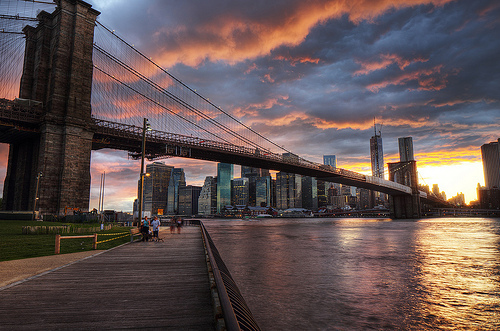
(Photo: CCHO)
NYC is one of the most amazing places in the world and certainly within America (it eventually got me as a full-time resident). Sometimes though, it feels like you can’t step out onto the street without spending $50.
I never thought I would enjoy living in such a metropolis but–as a traveler–NYC is the closest I can get to being everywhere in the world at once. On any given day, I’ll here a dozen languages and be able to eat Bhutanese for breakfast, Chinese for lunch, and Jamaican for lunch. If I want to see a movie at 2 am, I can do that too.
The prices of New York City are intimidating, but once you look past, through and around them, you realize that New York is a city filled with a plethora of ethnic enclaves, cheap meals, and free attractions.
ACCOMMODATIONS:
The hardest part about coming to New York City is finding cheap accommodation. Hotels have been pushing out hostels and trying to get the city to crack down on apartment rental services for a number of years now and they are succeeding – to our loss. Luckily, New Yorkers are creative and there are a number of ways you can still stay for cheap or free:
Choose Your Own Price – Hotwire and Priceline feature amazing deals for those willing to be given a random hotel. Using their blind booking feature, I have found hotels in Times Square for $80. And that’s Times Square, one of the most famous locations in the world. You can find rates cheaper than $50 if you expand your search outside Manhattan.
Jazz Hostels – One of the best hostels in Manhattan features some of the cheapest rates. Dorms start at $30 USD.
Couchsurfing – NYC features millions of hosts who are happy to show guests their city. Since hosts get inundated with tons of requests, ask early for the highest chance of success.
Airbnb – Despite the news, Airbnb is still alive and well in the city. Rooms start at $30 a night. Places outside Manhattan’s downtown area will be the cheapest.
Stay out of Manhattan – Like Hong Kong, Manhattan has the most expensive accommodation in the city, but boroughs such as Brooklyn and Queens have much cheaper food and lodging and are just a quick subway ride into the city.
The reason why people say, “New York is so expensive” is because they most look at hotel prices in Manhattan. But the NYC subway system is extensive and runs 24 hours a day. Lower your accommodation costs by staying outside Manhattan. It’s what most of the residents do, that’s for sure.
FOOD:
I get it. You want to come to NYC and eat well. The city has some of the best restaurants in the world but they take a huge bite out of your wallet. Save them for when you can afford them. For now, do what the rest of us do, and eat this way:
Eat at the food carts - You’ll find a million food cars in the city offers lots od different types of delicious and very inexpensive filling food. Check http://newyorkstreetfood.com/ to search by type of food to find locations.
Hot Dogs – Hot dog carts are everywhere, and a typical dog usually costs $2. For gourmet dogs, try Bark or Asia Dog. They cost around $5.00.
Pizza – Pizza is a staple food here in New York – there are more pizza shops than Starbucks. A single-topping slice is usually $2.50-$3.50 (historically, slices stay commensurate with the cost of a subway ride), but many offer plain cheese slices for only a buck. Look for shops clustered together as they get into price wars and offer the cheapest slices.
Chinatown Street food – Food carts on Canal Street (between Broadway and the Bowery) sell steamed, grilled, and fried Chinese food for $1-$2. Neighborhood dumpling stands offer 5 dumplings for a dollar. Prosperity Dumplings is my favorite. For the more intense Chinatown (what locals call the “Real Chinatown”, take the 7 train from Grand Central to the end of the line, Main Street in Flushing. Right next to the subway stop are dozens of stalls selling delicious eats for a dollar, roast duck and pork belly carts and basement food stalls with more cheap eats than you will know what to do with.
Falafel Stands – Tons of food trucks and stands sell quick and cheap falafel. For something a bit more established, visit Mamoun’s, which offers Baba Ganoush, falafel and kebabs for under $6. It’s located near Washington Square Park. There’s usually a line.
Great cheap tacos – Fabulous tacos around town, and more are opening every day. For authentic recipes in a great setting, try LES Taqueria on Orchard. Another great option is La Esquina on Kenmare, right in the middle of shopping districts. Don’t miss their elote either.
Some of my favorite places to eat are:
Chelsea Market (food stalls, local eats, farm-to-table)
Sao Mai, or Pho Bang (all Vietnamese)
Wondee Siam, Nahm (both Thai)
Bareburger, Corner Bistro, Siggy’s (each with delicious burgers)
Num Pang (Vietnamese sandwiches)
[NOTE FROM TIM: For a ton of my favorite spots in NYC, check this out -- The New York City Food Marathon: 26.2 Iconic Dishes in One 24-Hour Walking Tour.]
SIGHTSEEING TIPS:
One of the virtues of NYC is that you can sightsee some of its greatest attractions without spending anything.
To see the statue of liberty, take the Staten Island Ferry - That two-hour long line to see the Statue of Liberty not appealing? Well, walk a few blocks to the Staten Island ferry. The free ferry will take you across the harbor and give you a good view of both the Statue of Liberty and the city skyline. The ride takes about 20 minutes. In other words, you can see it for free and with no line!
Walk the Brooklyn Bridge – Walk across the Brooklyn Bridge to experience an interesting view of the New York skyline and harbor. It’s a long walk but good food and drinks (like the brewery) await you on the other side. Again—free.
Museum hop for free - NYC is littered with some of the best museums in the world, from the Met to the MoMa to the Guggenheim. Many museums offer free entry certain days of the week. The Whitney Museum of American Art is free on Fridays after 6 p.m., the Solomon R. Guggenheim has “suggested” donations after 5 p.m. on Saturdays, the Museum of American Folk Art is free, the Cooper-Hewitt National Museum of Design is free on Tuesday evenings free, the American Museum of Natural History is free, and the Metropolitan Museum of Art (Met) is also free (suggested donation is $20). The Museum of Modern Art (MoMa)– free admission Friday nights, 4 – 8pm (be warned, it’s a mob scene on Fridays).
Get Discounted Theater Tickets - You can’t come to NYC and not see a Broadway show. Tickets though can run hundreds of dollars, especially for the new and popular shows. Luckily, there’s a way to get discount tickets. The TKTS stand in Times Square offers 40-50% off select shows. You need to arrive at the counter the same day to see what they have but it’s usually a widespread and good selection. Be prepared to wait in line for about an hour. TKTS also have offices at the South Street Seaport and in Brooklyn.
Many shows offer cheap “rush” tickets (i.e. first come, first served tickets) on the day of the show. These are for tickets that often don’t sell well, like partially obstructed views or the last row of the balcony. So you get cheap tickets ($25-40) but not great seats. However, for sold-out hit shows, these are sometimes the only tickets to be found. The best resource for rush ticket information is Studentrush.org.
Top of the Rock – Right in Rockefeller center, you can head to the top of the building to see panoramic views of the city. This is better than going up to the Empire State building because with the top of the rock, you can get the Empire State building in your photos. While there are only slightly fewer tourists at the Top of the Rock, it’s a vastly less clichéd experience with a much shorter line.
Take a free tour – New York is a great place to walk around. However, only seeing New York from the outside is half the story. Take some of the free tours to see learn about the history of the city. The best tours:
The Central Park Conservancy offers several park tours each day based around certain themes: history, design, ecology, and horticulture.
The Grand Central Partnership gives tours of the famous terminal every Fridays at 12:30pm.
The Village Alliance leads walking tours of Greenwich Village, June – October.
The Lower East Side BID offers walking tours every Sunday at 11am, April – November. The tours last three hours.
Free Tours By Foot offers walking, food, and bike tours of NYC’s neighborhoods for free (though you should tip the guide!). There are multiple tours throughout the day making them easy to schedule.
Big Apple Greeter provides free walking tours, lead by locals, as part of a city tourism initiative. You’ll need to make reservations about a month in advance.
Federal Hall – Right next to Wall Street is an often-missed museum. Federal Hall is where George Washington, first president of the United States, was inaugurated in 1789. The hall, which is free and open to the public, showcases life in the city at that time as well as some information about the early founding of our government.
New York City may be famous as one of the most expensive cities in the world but sightseeing, eating, and drinking can all be done on a budget if you know where to look and how to navigate the system.***
If you can take three of the most expensive cities in the world and turn them into an affordable destinations, you can turn any dream destination into a reality. Just a few universal travel principles make travel to anywhere possible. Budget travel isn’t about being cheap; it’s about not being wasteful.
The tactics we’ve covered–using hotel and flight points, searching out alternatives to hotels, eating at tinier stalls, morning markets and less glitzy places, and using attraction passes – can work in any city. Traveling the world on $50 is more than just traveling by a simple number, it’s about being a smarter traveler. It’s about training yourself to look for deals in unknown places, to travel like locals live.
###
Matthew Kepnes runs the award winning budget travel site, Nomadic Matt . He got the travel bug after a trip to Costa Rica in 2004, and decided to quit his job, finish his MBA and travel the world. His book, How to Travel the World on $50 a Day –a guide for traveling cheaper, better, and longer–is now available.







